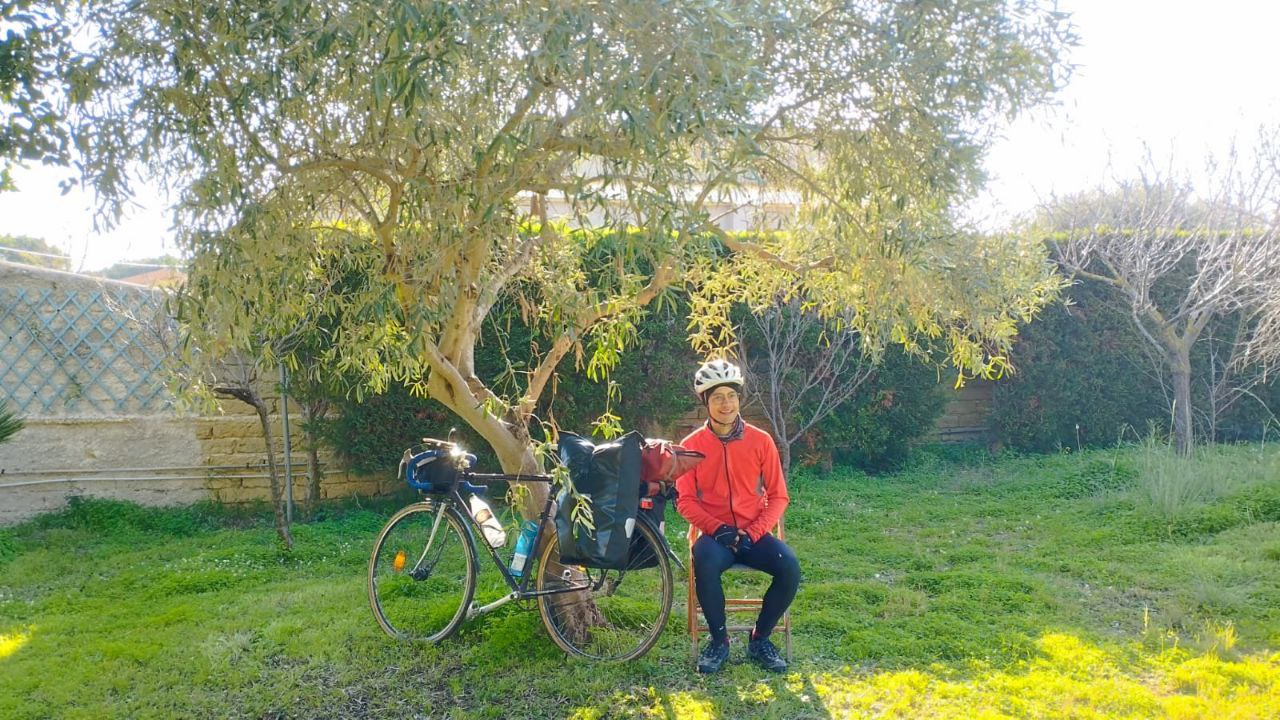
Before taking up a new job, I wanted to get out of the daily grind for some time. As I like cycling and have done memorable trips in the past, I decided to go for a longer (roughly one month) cycling trip again. My destination was southern Italy because this is well connected to Germany via trains, offers relatively mild weather in winter and seemed like a diverse and beautiful place.
The Route
As I did not want to bike in the freezing cold, the starting point would ideally be already far south. After some research, I was set on doing some cycling in Sicily. To extend that, I would include a part of mainland Italy. The cycling blog Rolling Existence and the Sicily Divide where the rough inspiration, resulting in my itinerary from Bari to Palermo. With the help of guidebooks - I really like Reise Know How publishing house - and friends (thanks Malte, Valerio, Martin, Miriam) I did the more fine-grained planning mostly on-the-go. For this, I relied on the excellent OpenStreetMap data paired with Organic Maps which is an awesome, community-run offline maps application for smartphones. I rode mainly on roads and gravel paths as there are only very limited dedicated cycling tracks in this region.

The GPX tracks are available to download in the respective sections of this post.
The Bike
My daily commuting bike in Leipzig is an old road bike which was modified to a single speed (only one gear, but not fixed). For the flat Leipzig environment, this is ideal: simple, reliable, fast. The philosophy behind a single speed resonates with me. Therefore, I was having the thought of using exactly this bike for the trip. I also discovered that people like Markus Stitz have done around the world trips on one gear and it inspired me to give it a try. For me, cycling is not about setting records, it is about connecting to the landscape, the people and having a good time. It does not require the latest electronic shifting mechanism. So I was set to use my trusty commuter bike for this trip!
In the weeks before, I spent many hours preparing the bike for this adventure, e.g. researching gear ratios, installing a hub dynamo, changing the stem or switching to robust gravel tires. It took much more time than anticipated but I also learned a great deal of things about bikes in the process. It made me feel confident that I could handle whatever would break during the trip.
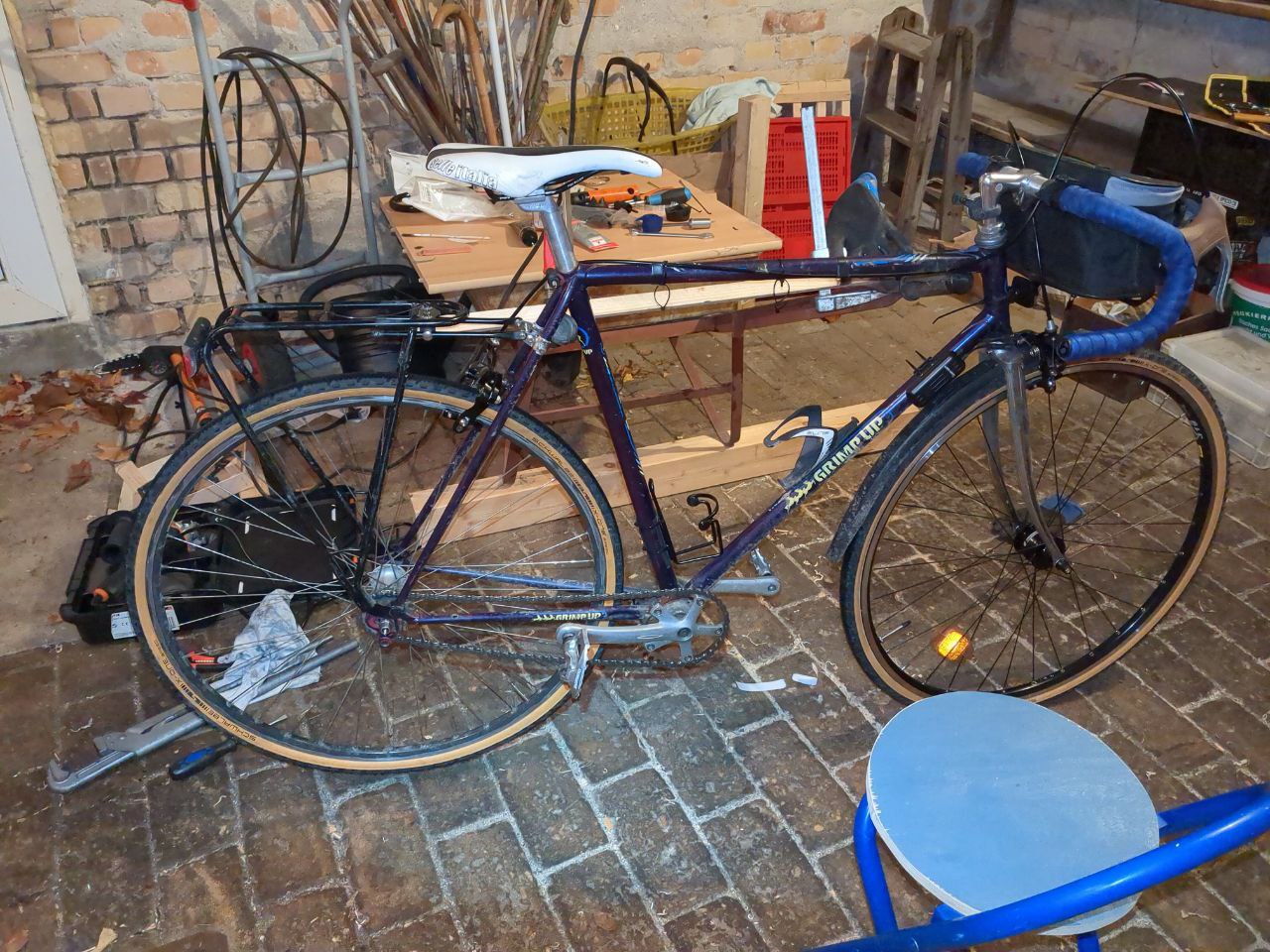
The Gear
Packing for this trip was challenging for a couple of reasons. Although the route is far south it was still winter. Especially during the nights, the temperature would drop to around zero degrees, meaning that I needed warm clothes. Also, I was planning on spending at least a portion of the nights in my tent. For me camping is not only a way of traveling on tight budget but something I enjoy. I like being outside and having maximum independence with my own shelter and vehicle. To save weight and space, I removed the inner part of the tent and only used the ground sheet and outer shell. As I would spent some time also as a regular tourist, I wanted to have some non-outdoor clothes with me. The total weight of my equipment without food or water clocked in around 15 kilograms. To carry all that gear I used two rear panniers and attached a backpack on top. Additionally, I had a small handlebar pack.
Part 0: Getting To Bari

Leaving Leipzig in wintery conditions
I caught the morning train from Leipzig to Munich and then a Eurocity from Munich to Bologna. Both had bicycle transport options which made it very easy. The route from Munich to Bologna over the Alps is a very scenic ride, especially in winter when you are suddenly in the completely snow covered mountains. After staying one night in Bologna at a friends place, I jumped on an intercity train with bike transport to Bari. Everything worked out smoothly and I was excited to set off.
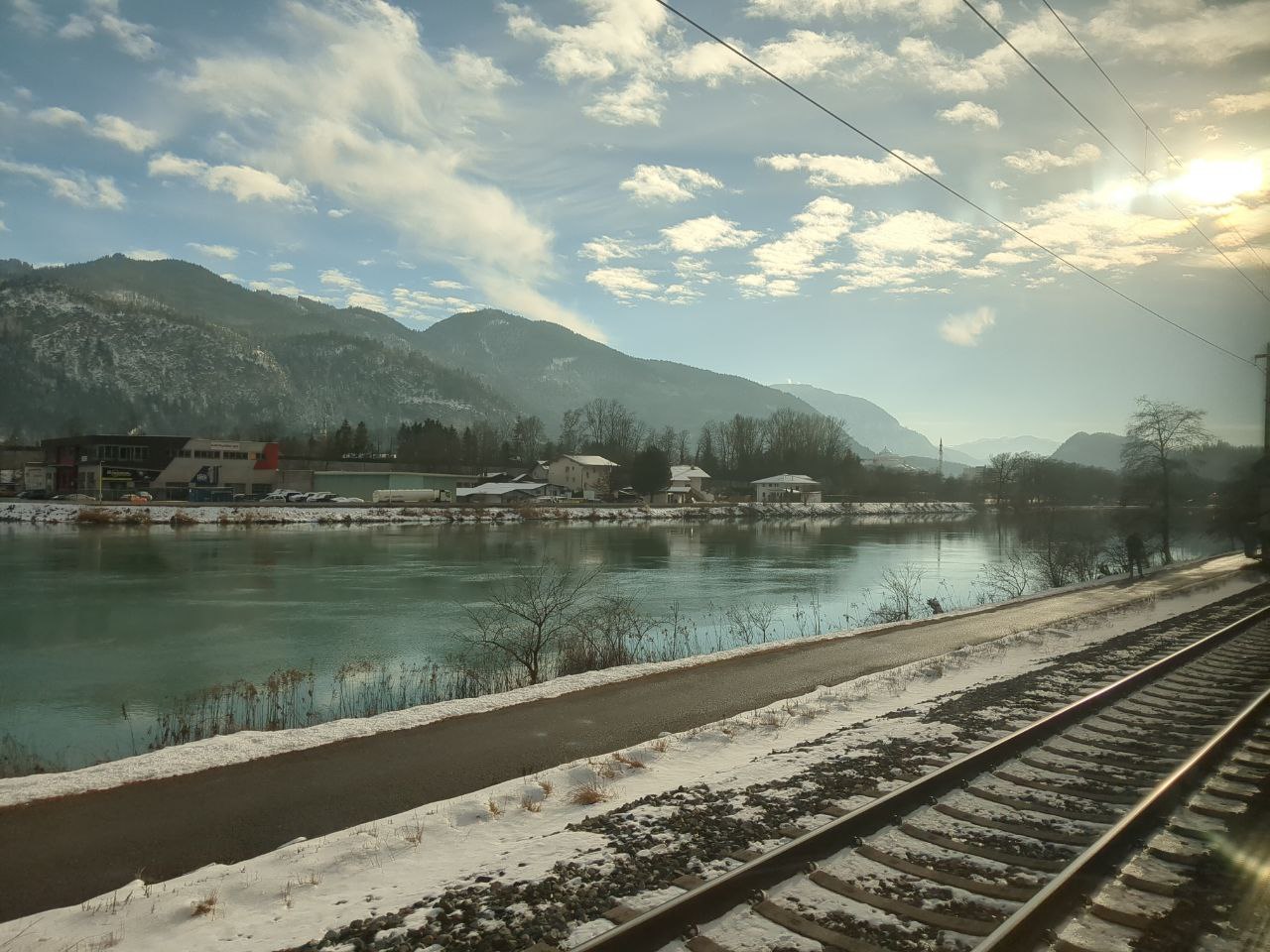
Crossing the Alps by train
Part 1: From Bari to Reggio Calabria
- Duration: eleven days including two rest days
- Distance covered: 749 kilometers
- Elevation gain: 6520 meters
- GPX Track
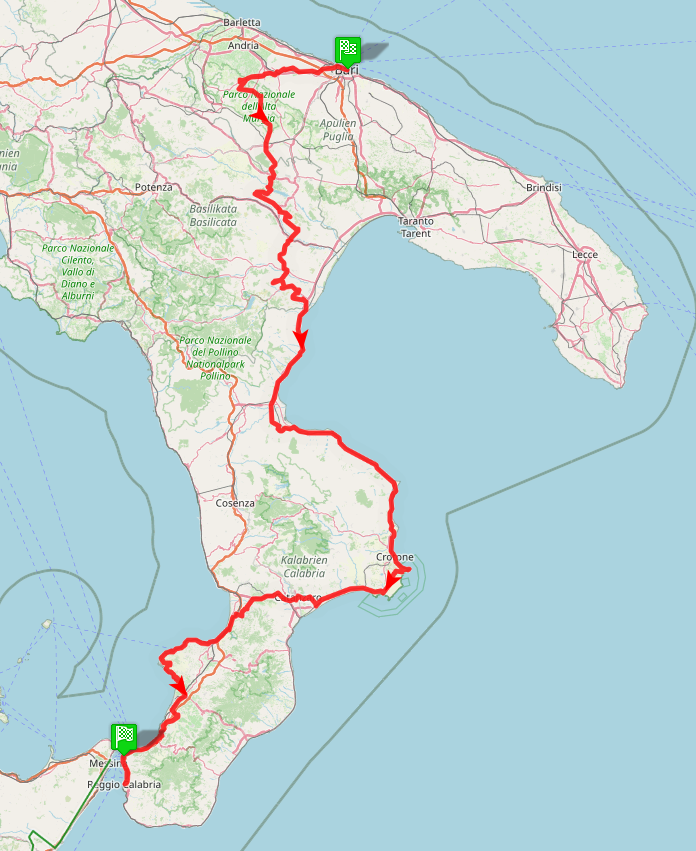
After doing a day tour in Bari to check if the bike and me is ready for the trip, I headed out of Bari for the Castel del Monte, a famous 12th century castle built by the Swabian King Friedrich II. Cycling out of the urban area was not fun as traffic was intense. After several exhausting hours fighting against strong headwinds and constant uphill, I finally reached the castle. Being a winter tourist means that I was almost alone which amplified the monumental impression of the building.
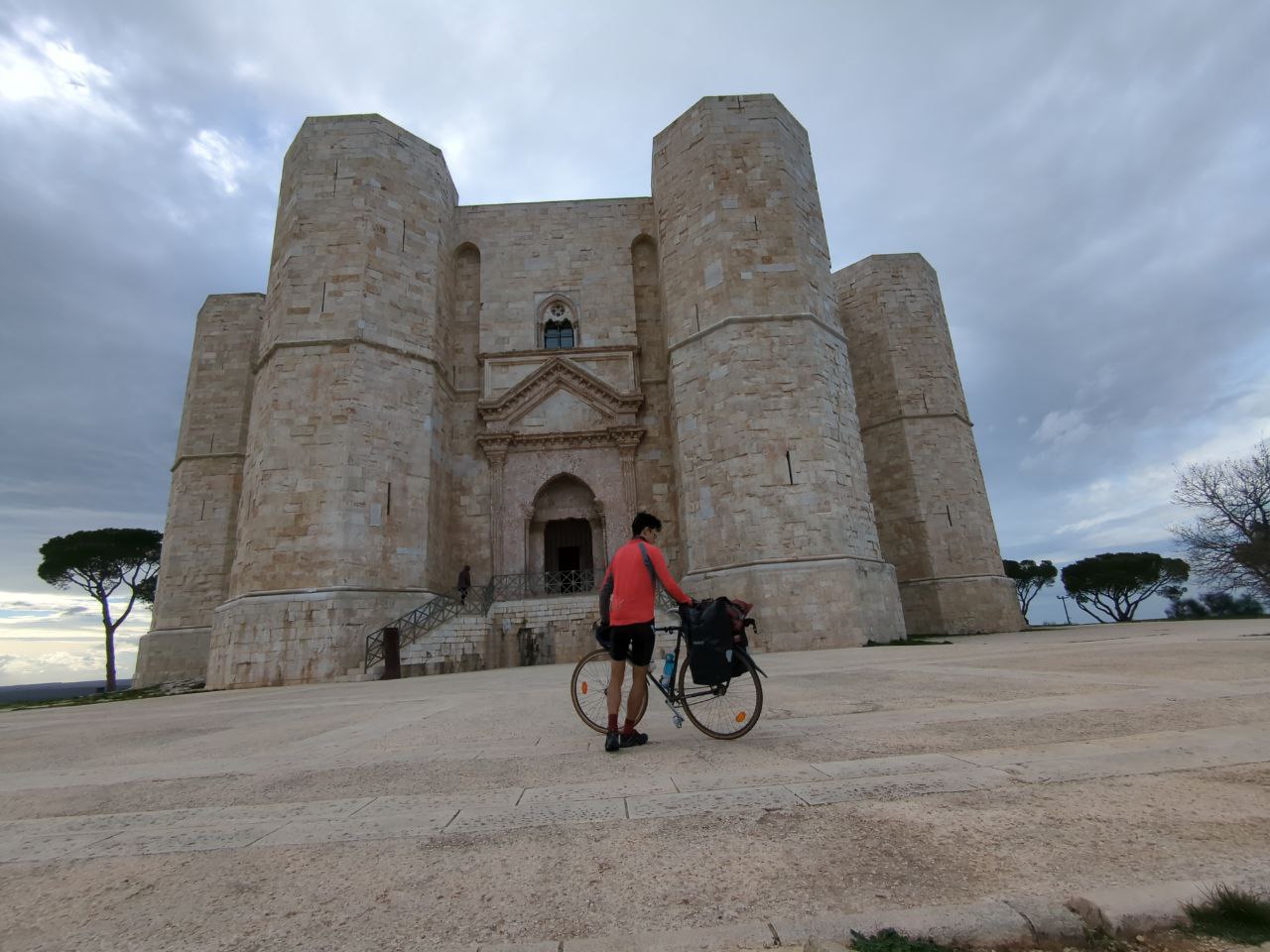
Me failing to take a self-timer picture
I pitched my tent in a secluded spot next to the road when the sun was already set. The next day, I was waking up to rain and it would not stop all day. Time to test out my rain gear.
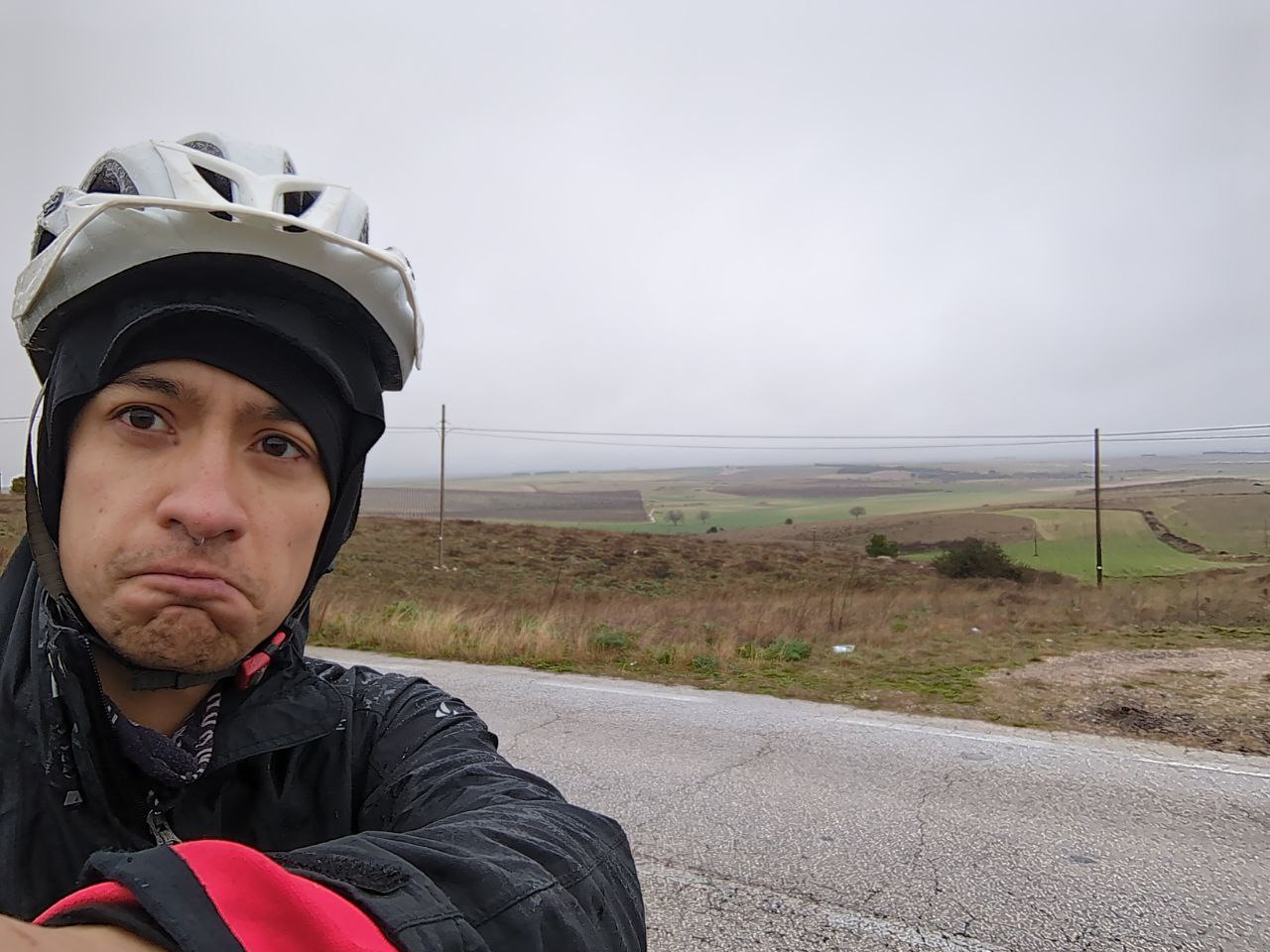
Trying to stay positive in bad weather
I had contacted a farm via Garden Sharing which is a website where people offer their grounds for camping. Therefore, my destination for the day was set. Physically, this was a tough day, being cold, wet and very tired at the end. However, my hosts and all of their animals lifted my spirits. I just wish I could speak more Italian. The next day, I woke up to clear sky and amazing view.

Setting camp indoor in an old farm house. Temperatures were around freezing point, so I gladly took up the offer for sleeping indoors.
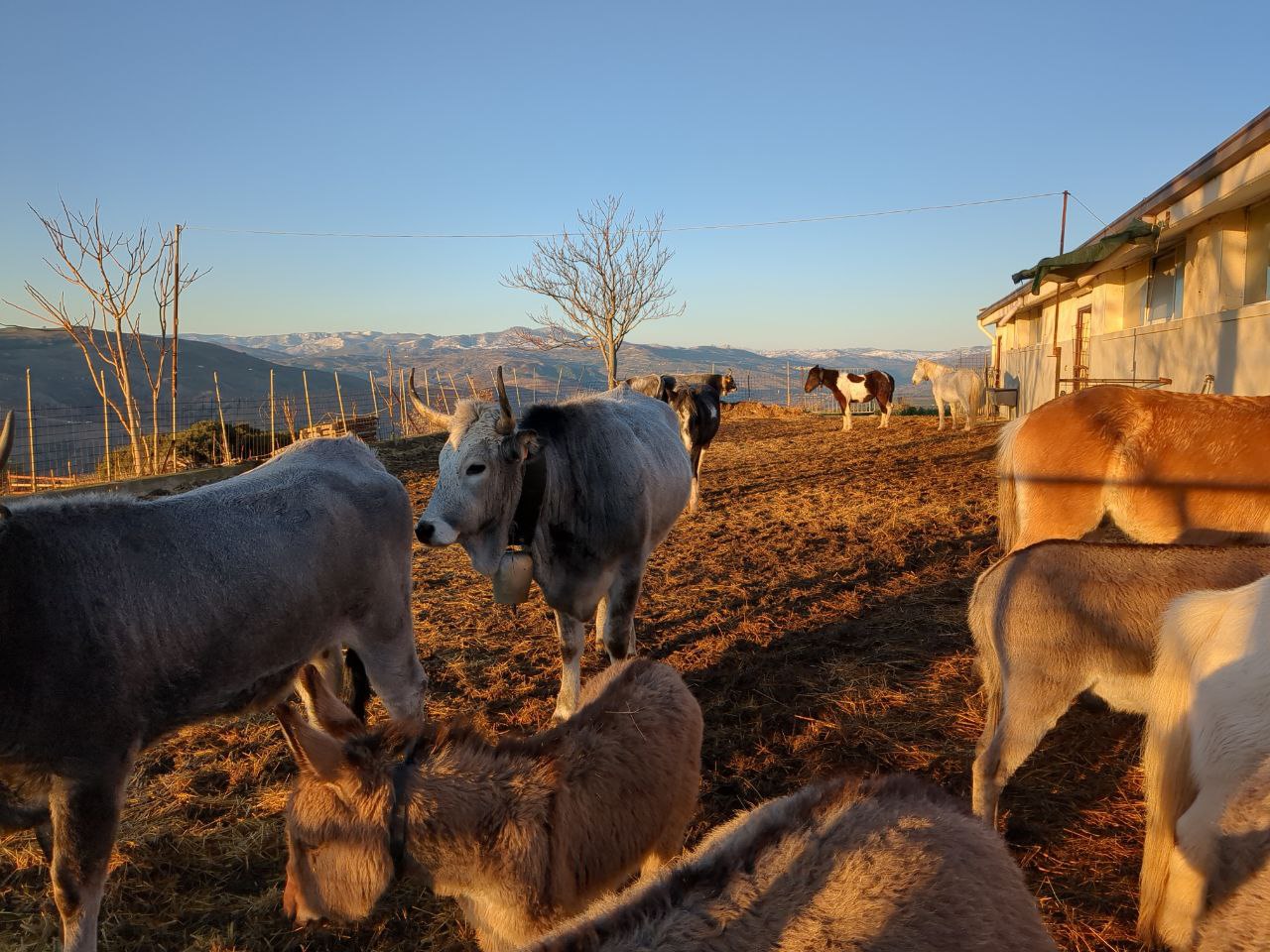
Lots of cute farm animals
In the following days, the cycling was superb. Small roads, friendly hosts and tons of citrus fruits.
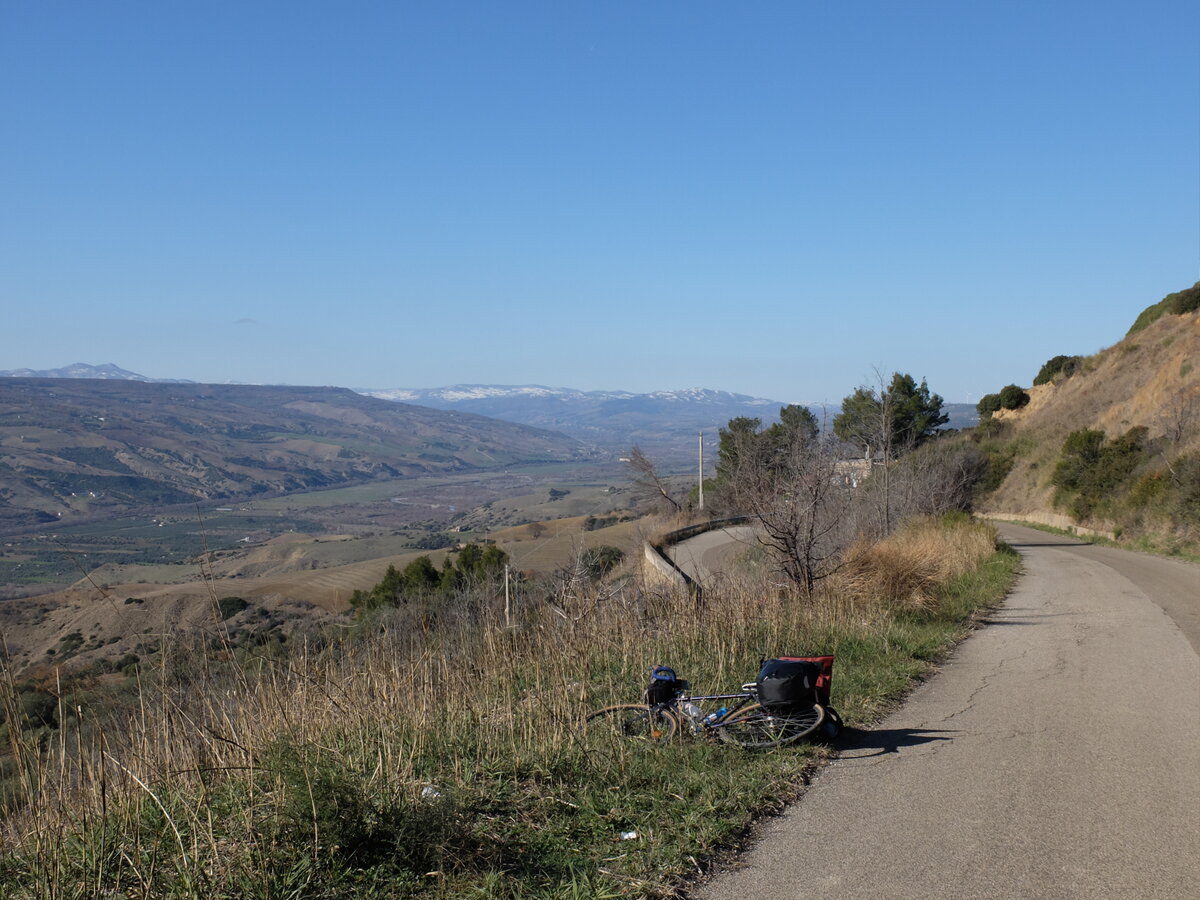
Enjoying a scenic descent
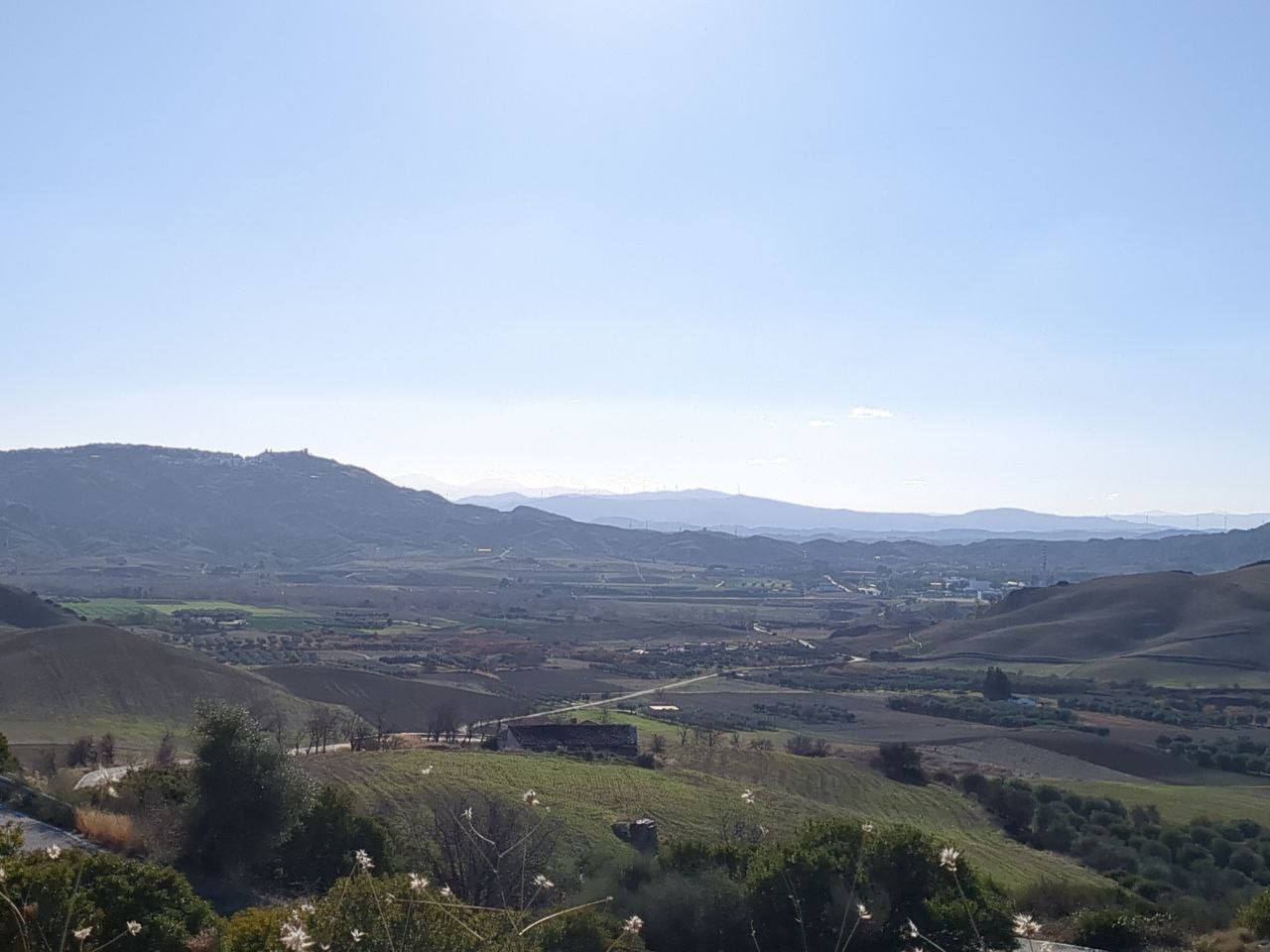
Another scenic descent

Orange paradise
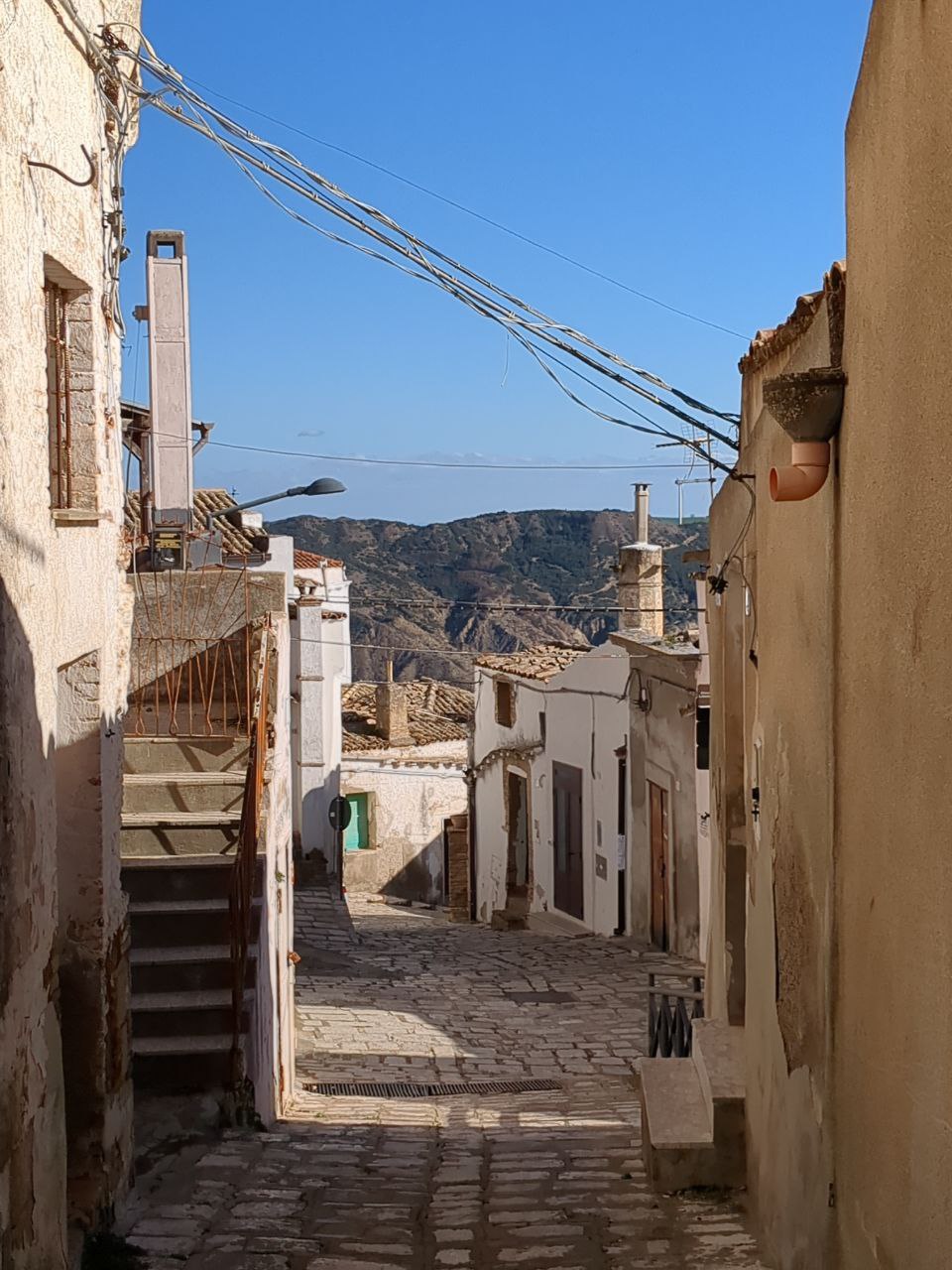
One of the old hilltop cities in the area
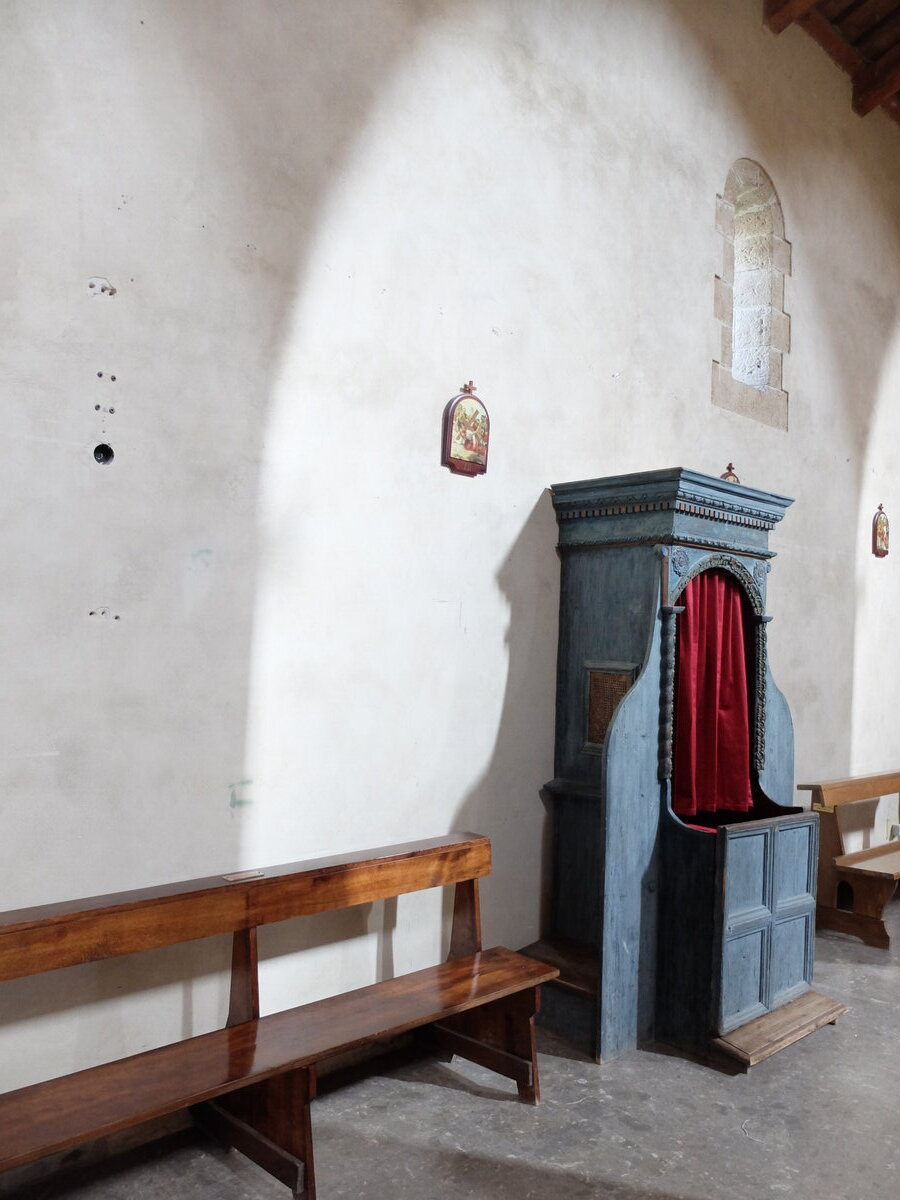
A small old church on the top of a hill
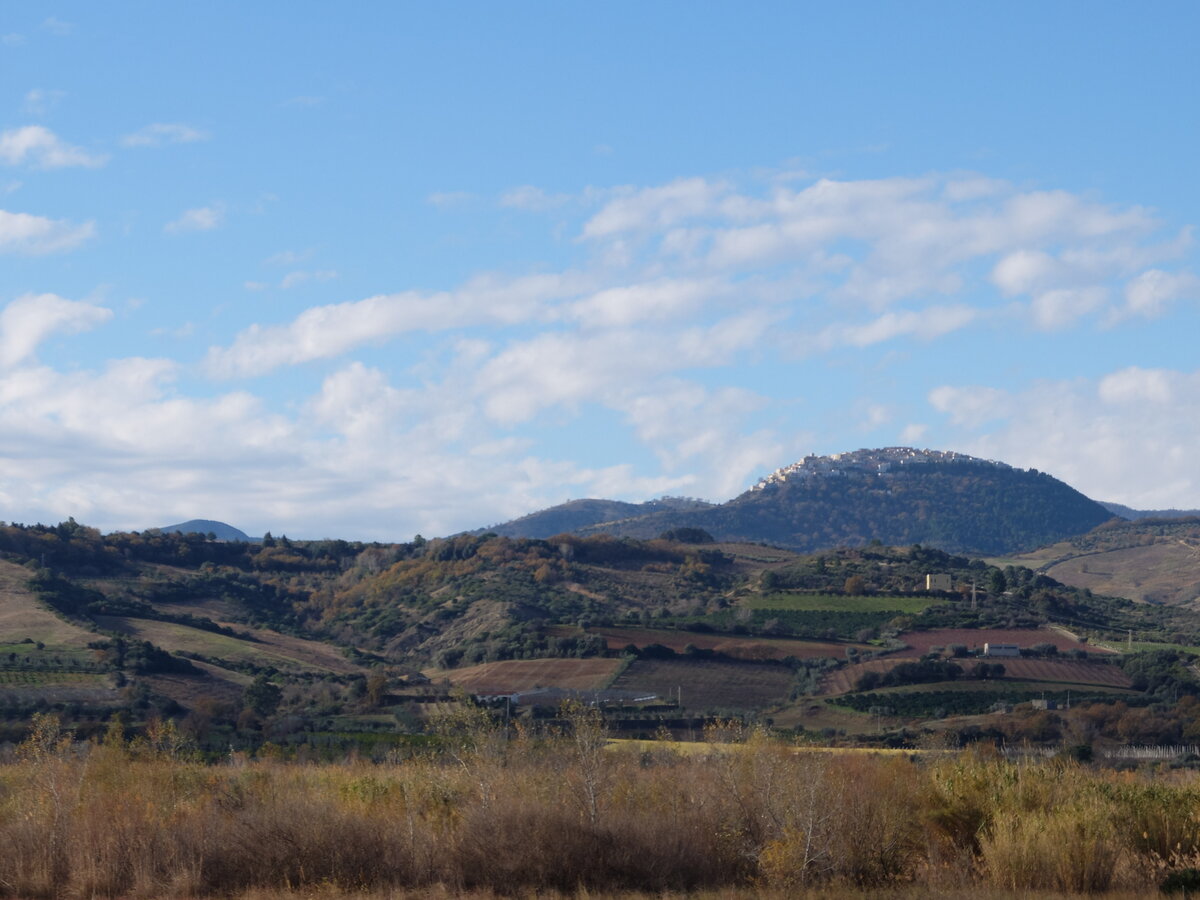
View of Rotondella, a famous hilltop city
I finally reached the Ionion sea near Rotondella when I crossed from Basilicata to Calibria. It was a welcome change from the hilly inland to the flat coast. I quickly covered long distances but the downside was the traffic. I even had to ride a small stretch (10 minutes or so) on the highway because there was no other good option. On the way there were beautiful beaches and I took my first dip in the sea for 2024.
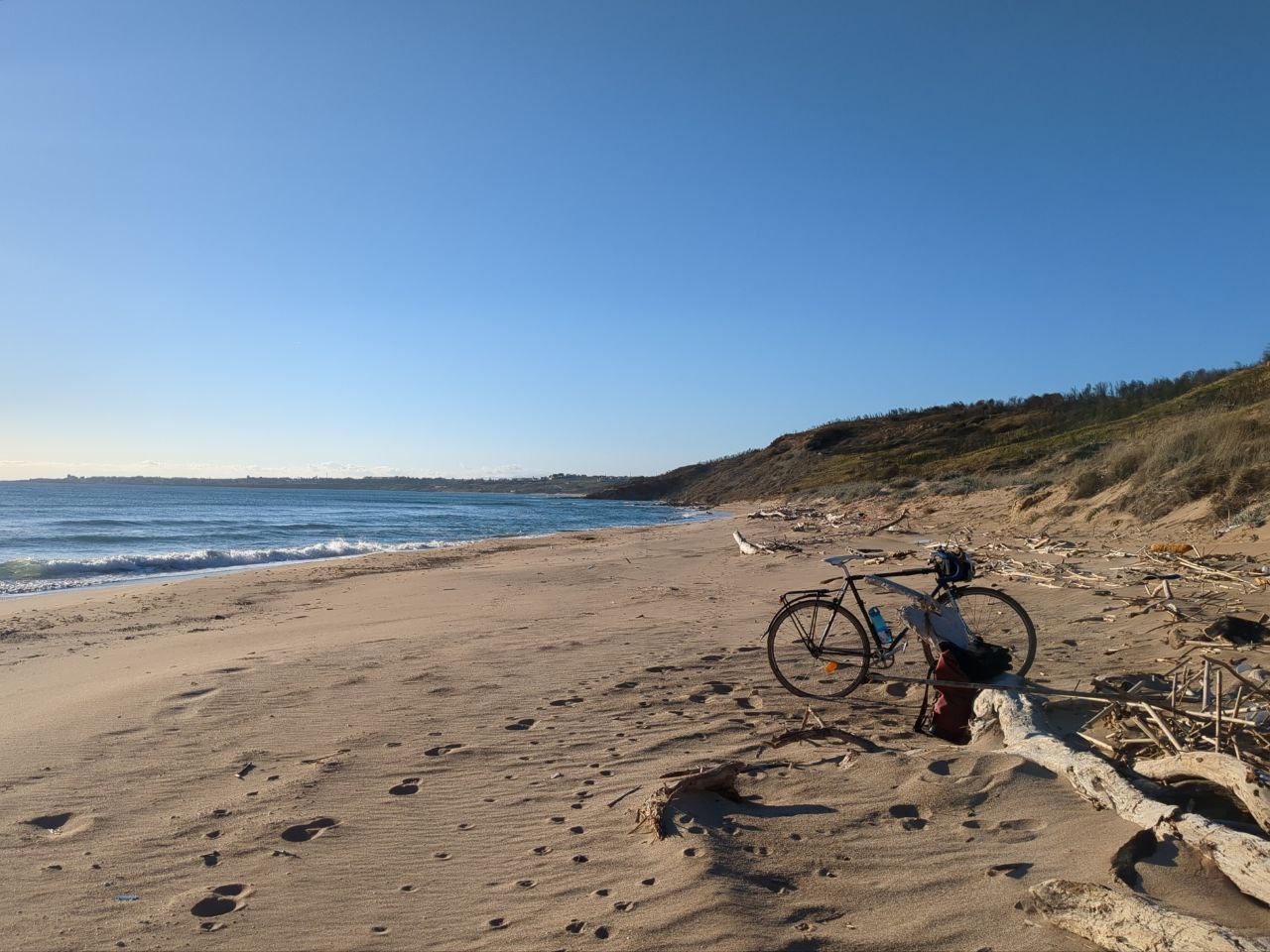
First dip of the year
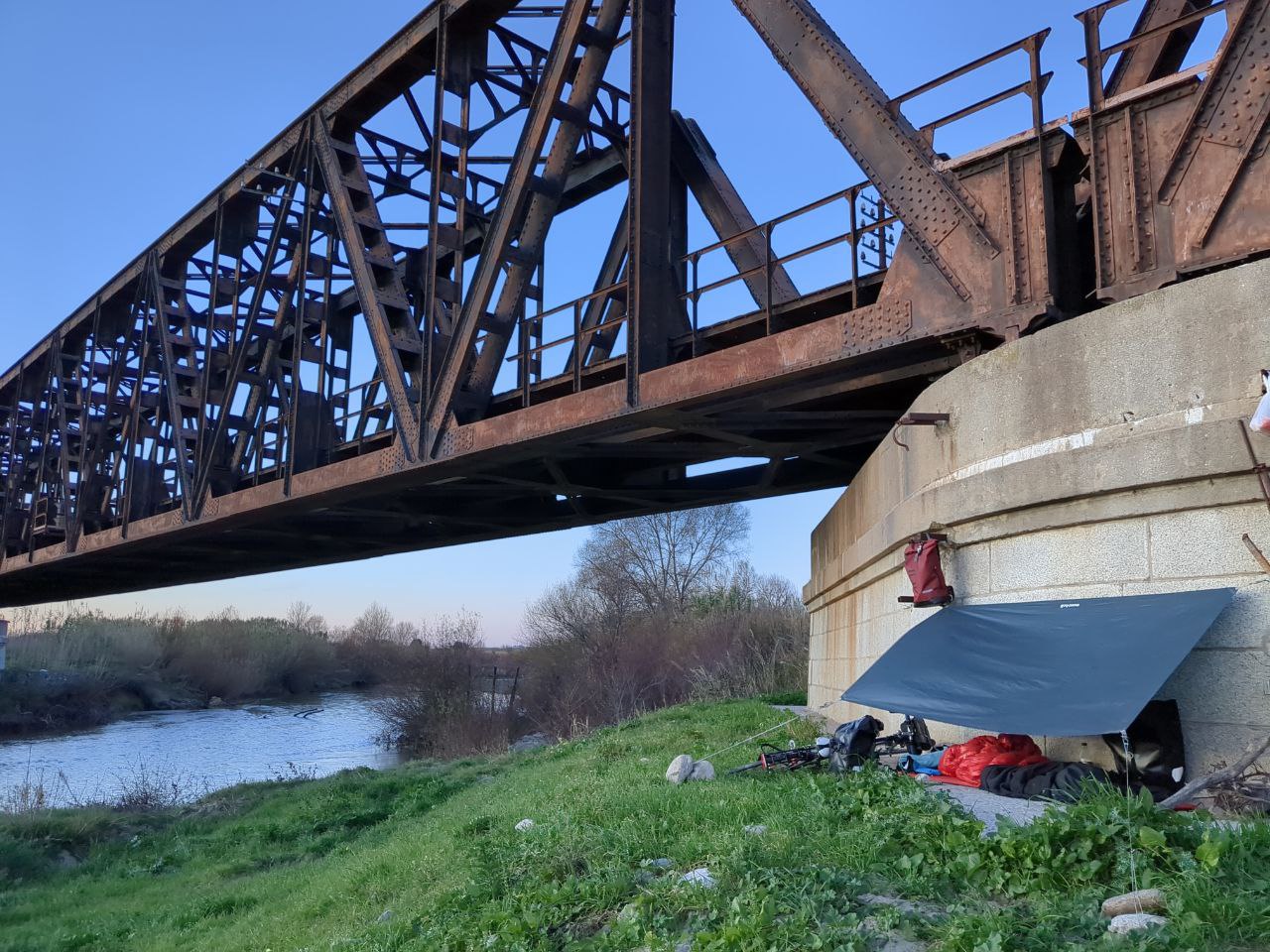
Setting camp under a railway bridge. Sleeping outdoors is always an adventure as I was woken up by a wild pig during the night.
Now it was time to cross the country for the Thyrrhenian sea. Again, the inland was very scenic, riding through endless olive groves with constant sun.

Olives anyone?
After reaching the coast, I followed it until Reggio Calabria, the final destination of the first part. The coast was more steep, offering breathtaking views but also demanding a lot from my legs.
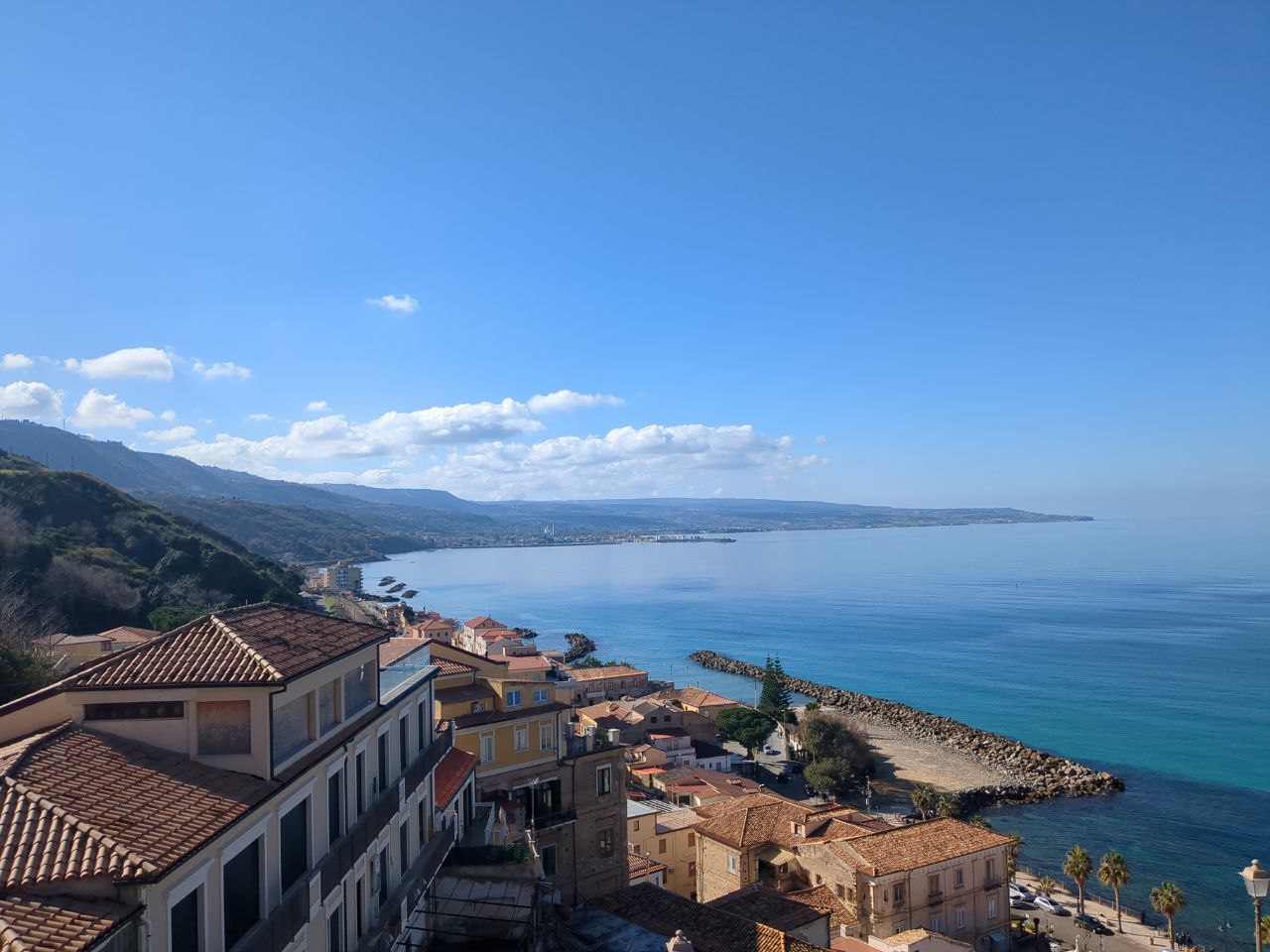
Thyrrhenian coast near Tropea
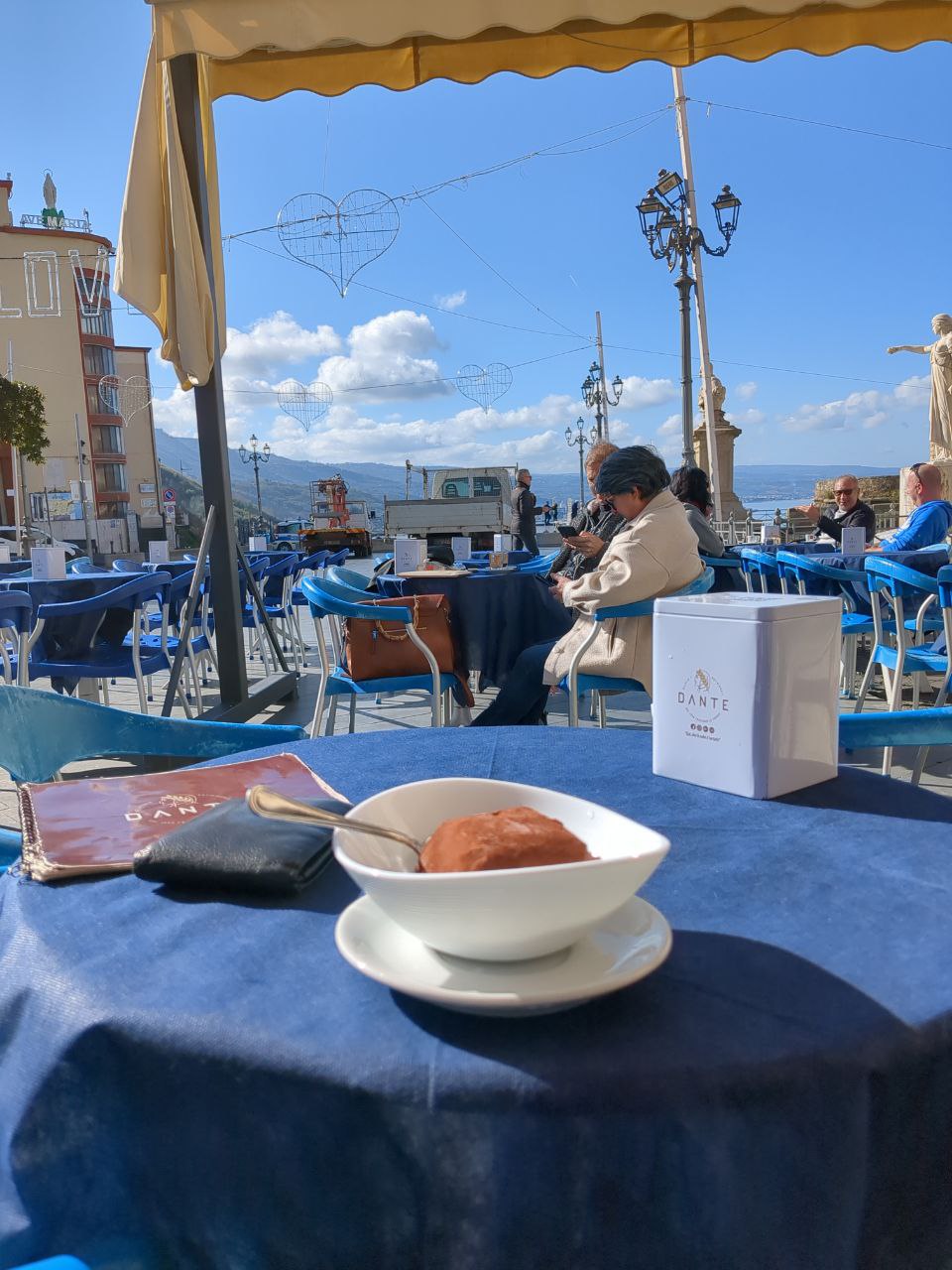
Taking a break in Pizzo, the place where the Tartufo was invented.
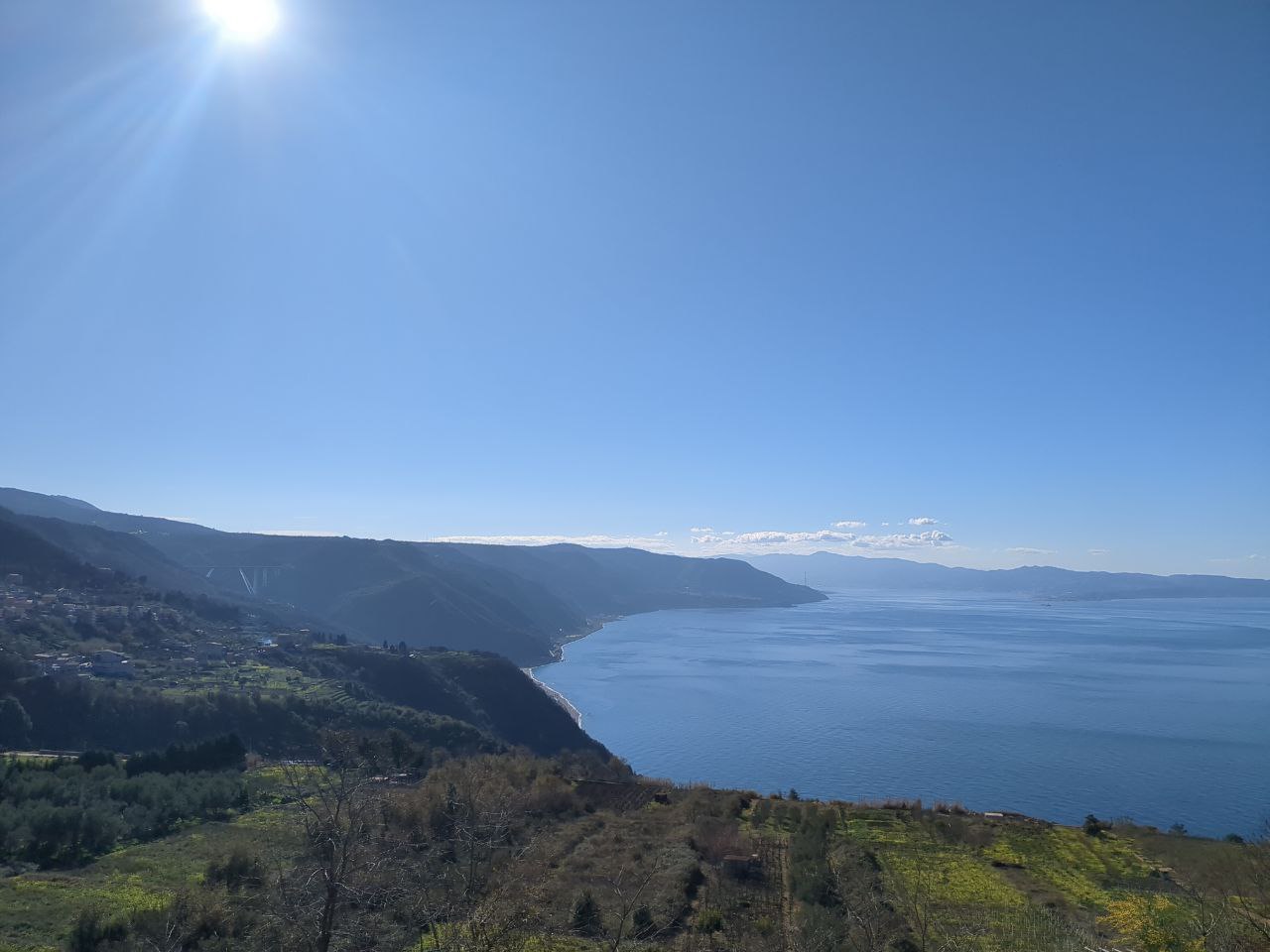
Final part of the Thyrrhenian coast. In the background one can already see Sicily.
Part 2: From Messina to Palermo
- Duration: ten days including one rest day
- Distance covered: 632 kilometers
- Elevation gain: 8423 meters
- GPX Track

The first day of the second leg started with a setback. I got informed that it was not possible to take the bike on the ferry from Reggio Calabria to Messina. This meant I had to go back roughly 20 kilometres to San Giovanni through dense urban area which I just cycled one day earlier. After overcoming this obstacle in the morning, I boarded the ferry.
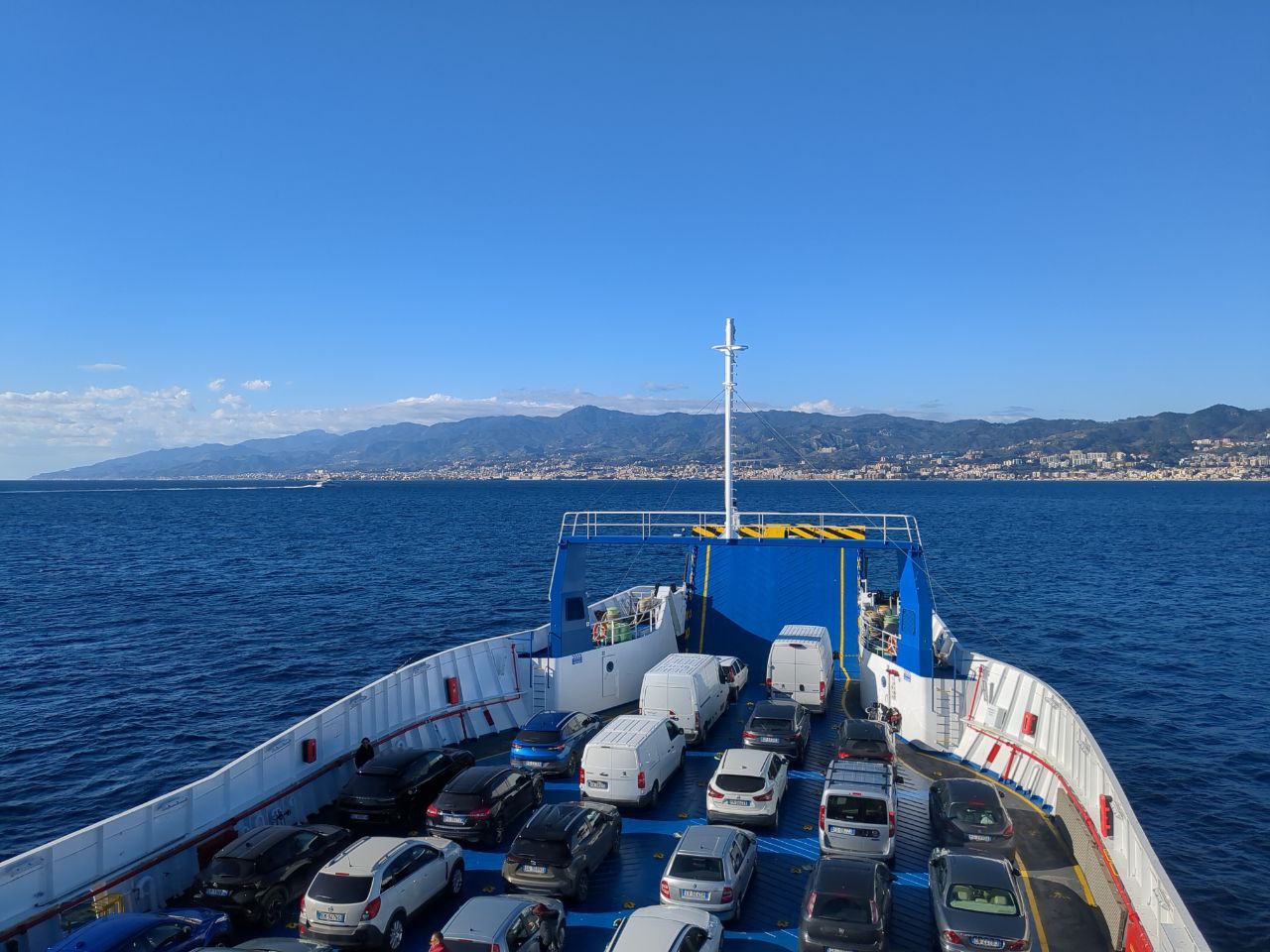
Setting over the Strait of Messina. Always exciting to board a ferry.
Finally in Sicily! I was a little bit surprised how densely populated the island is, especially the eastern coast is one city after the other which also means a lot of traffic. After staying one night in touristy Taormina, I cycled a little bit inland to explore the northern side of Mount Etna.
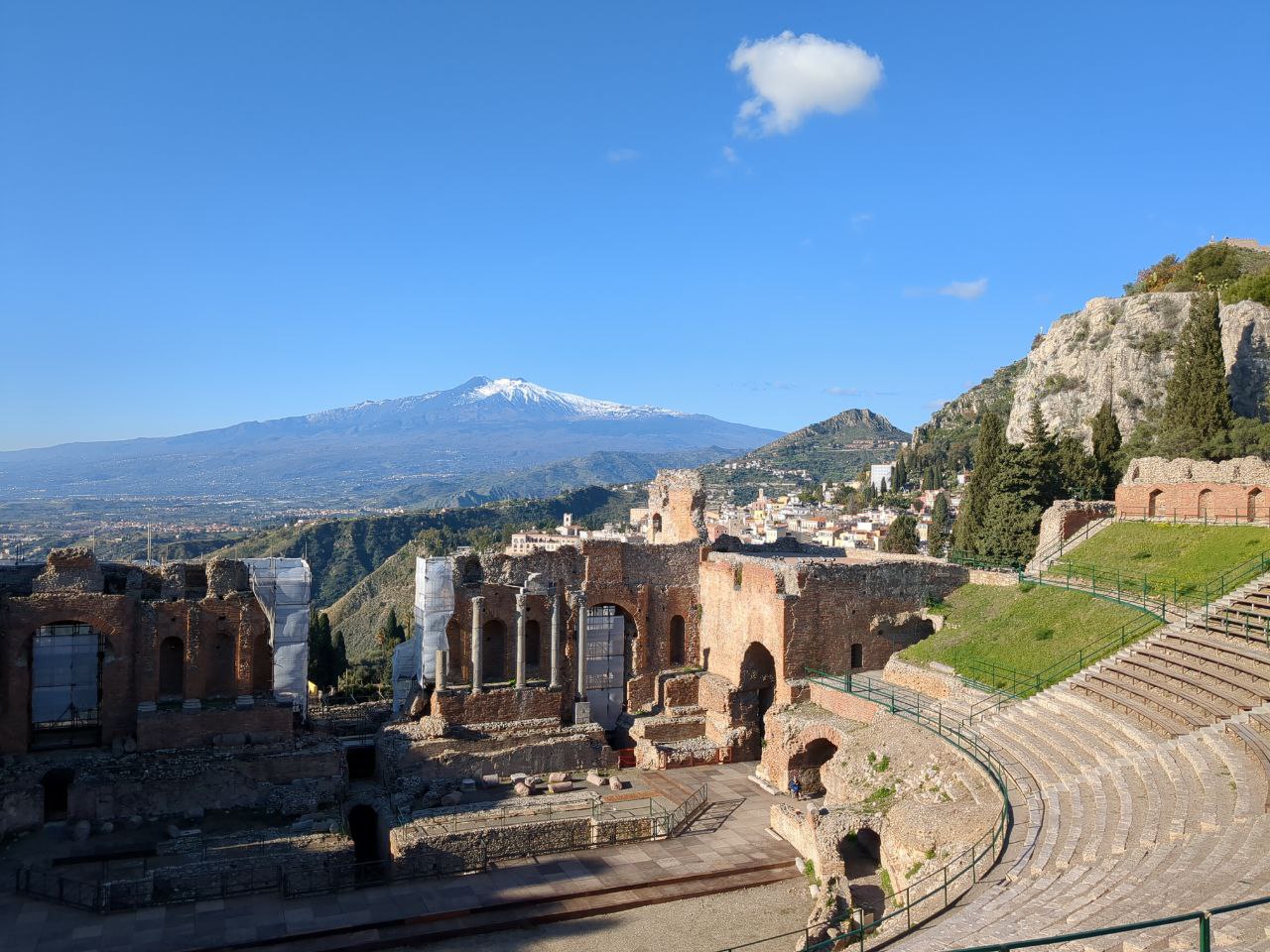
The famous greek-roman theater with Etna in the background
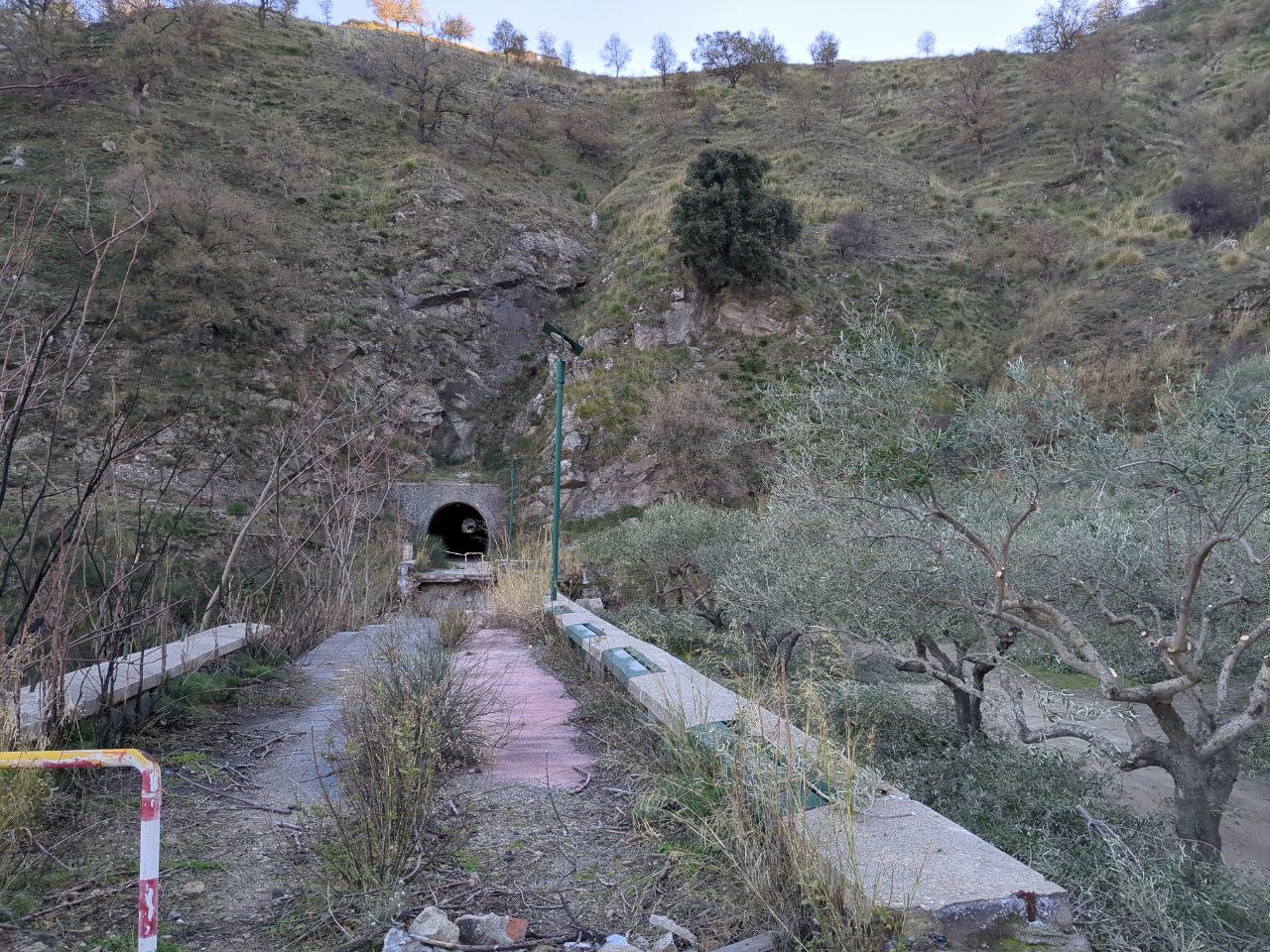
An old railway was converted to a cycling track. The project was abandoned halfway.
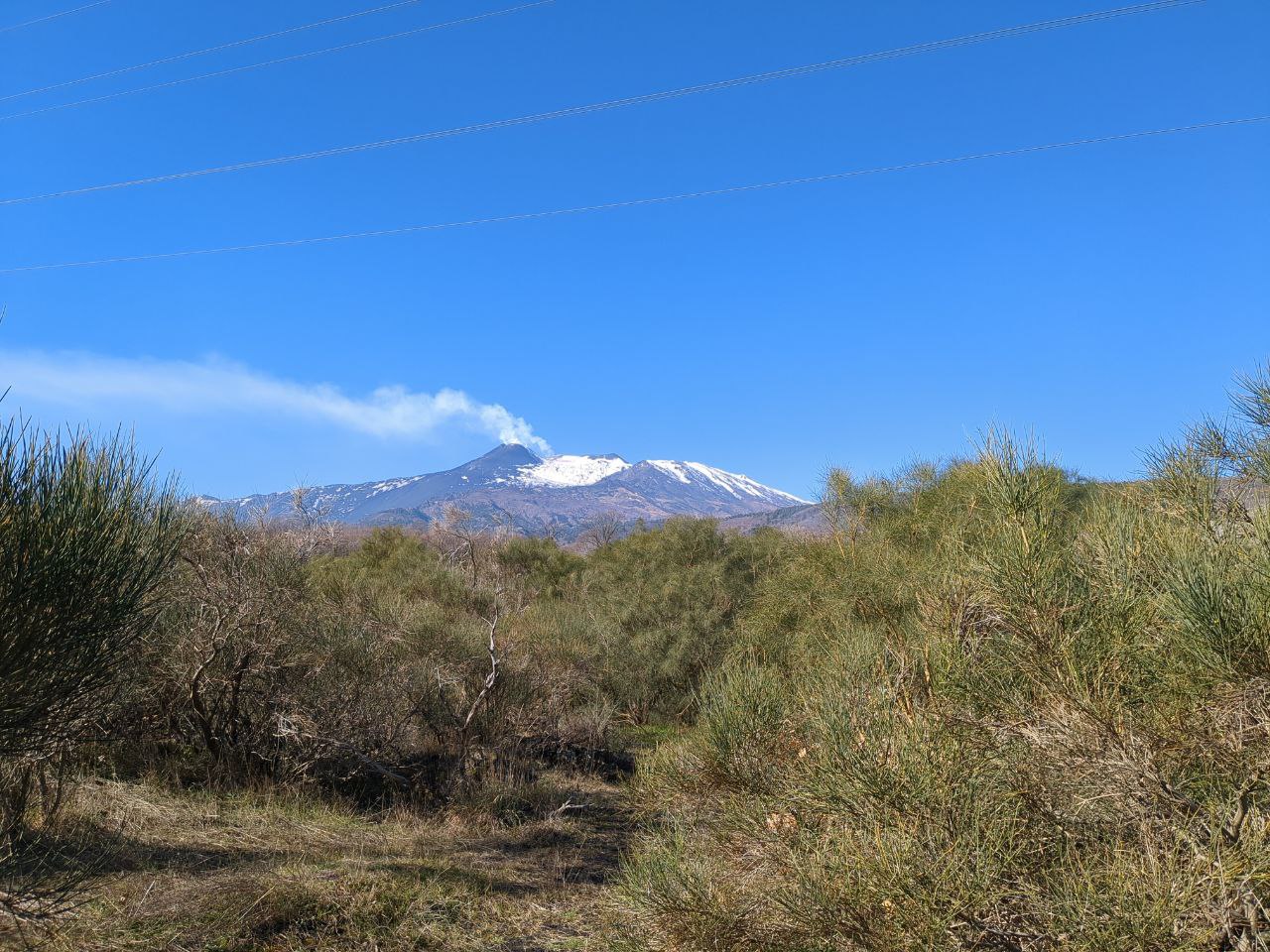
Smoking Etna. With over 3300 meters height the volcano dominates the landscape from all directions.
The next goal was Catania, the second largest city of Sicily. Getting into the urban area I was again met with heavy traffic, although I could enjoy it this time more maybe because it was mainly downhill. With the bicycle you can easily jump a lot of traffic jams like on a scooter.
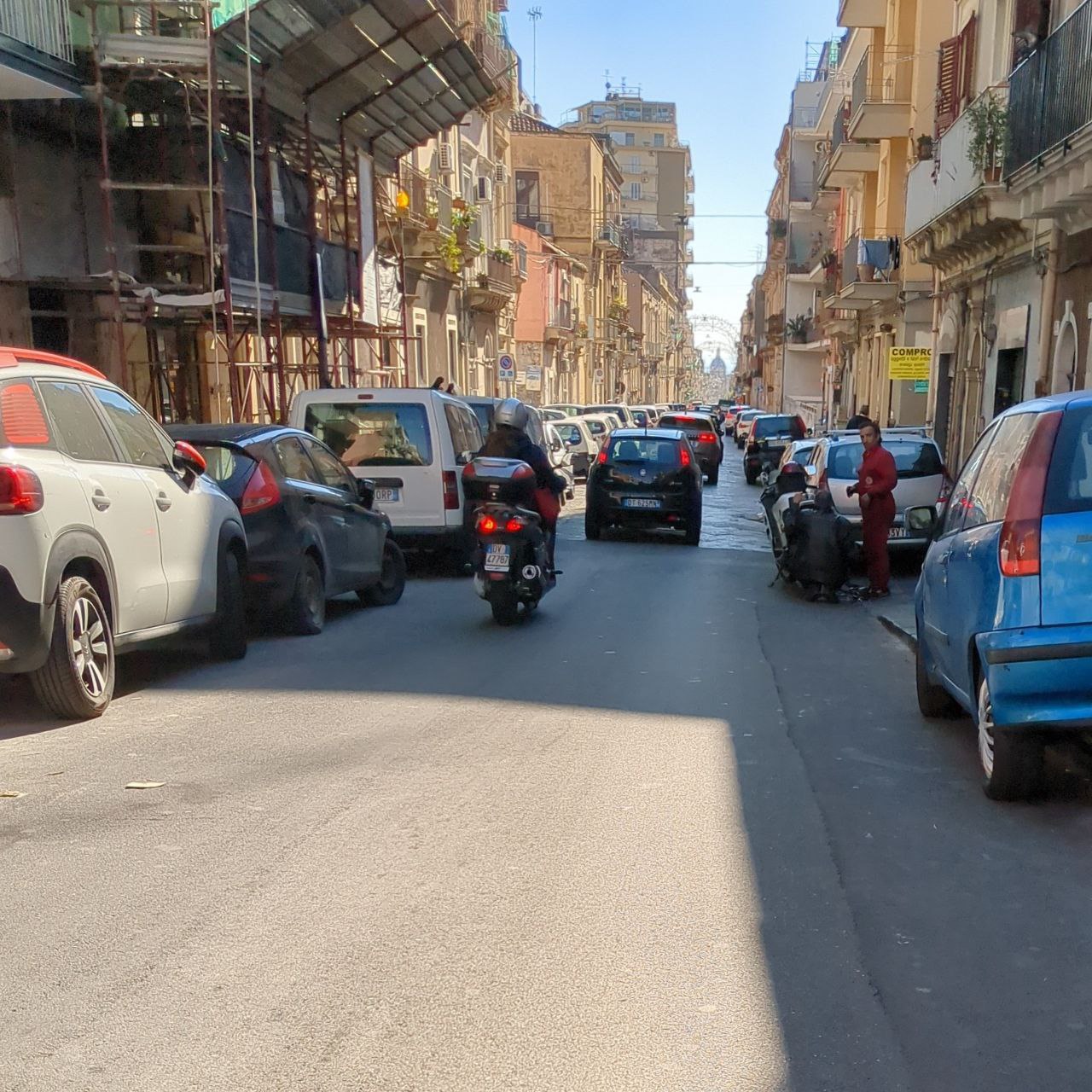
Cycling towards the center of Catania
I took the decision to not follow the original Sicily Divide route as I wanted to see the southern part of Italy with Syracusa, Noto and Modica.
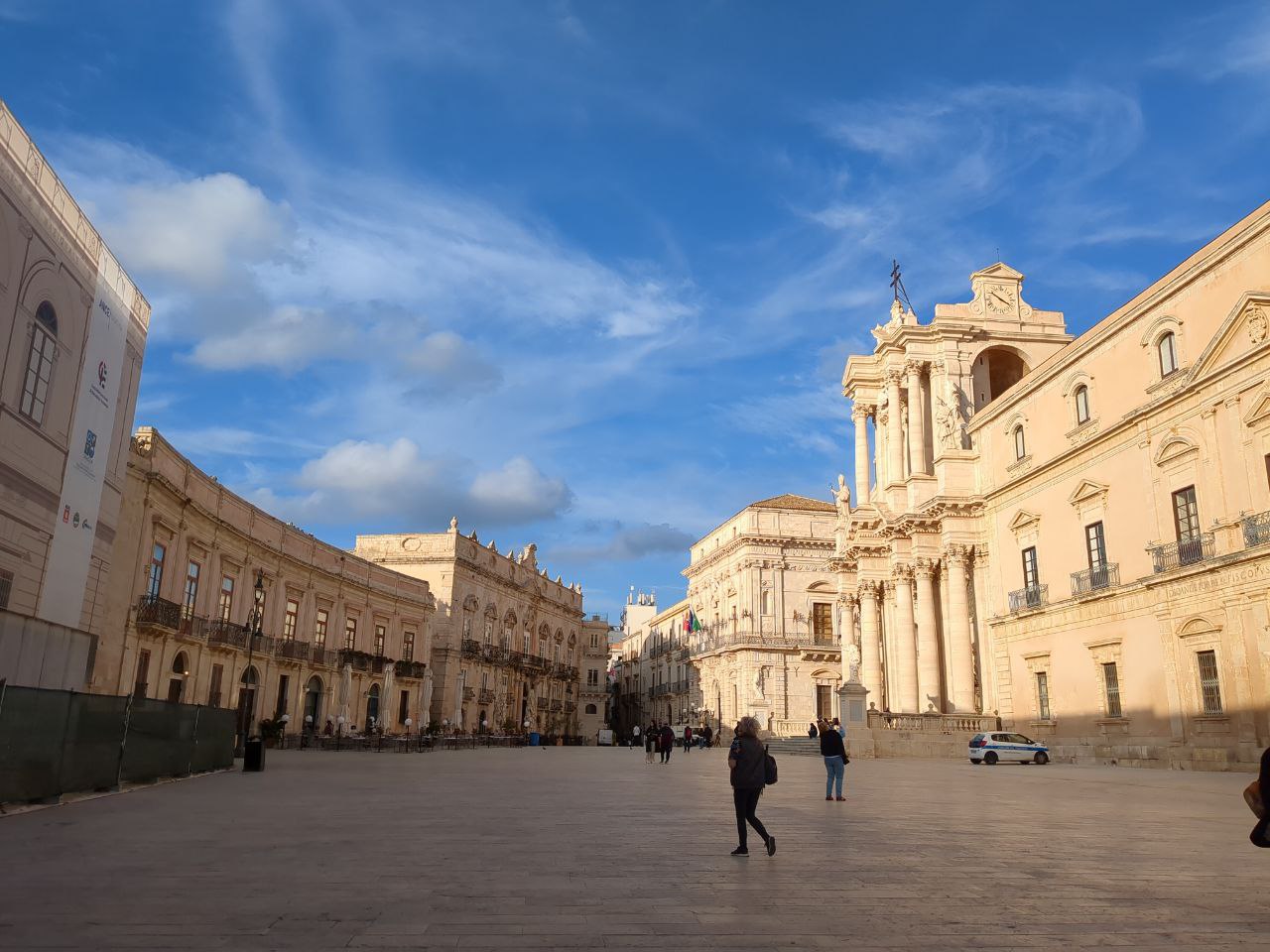
Historic center of Syracusa
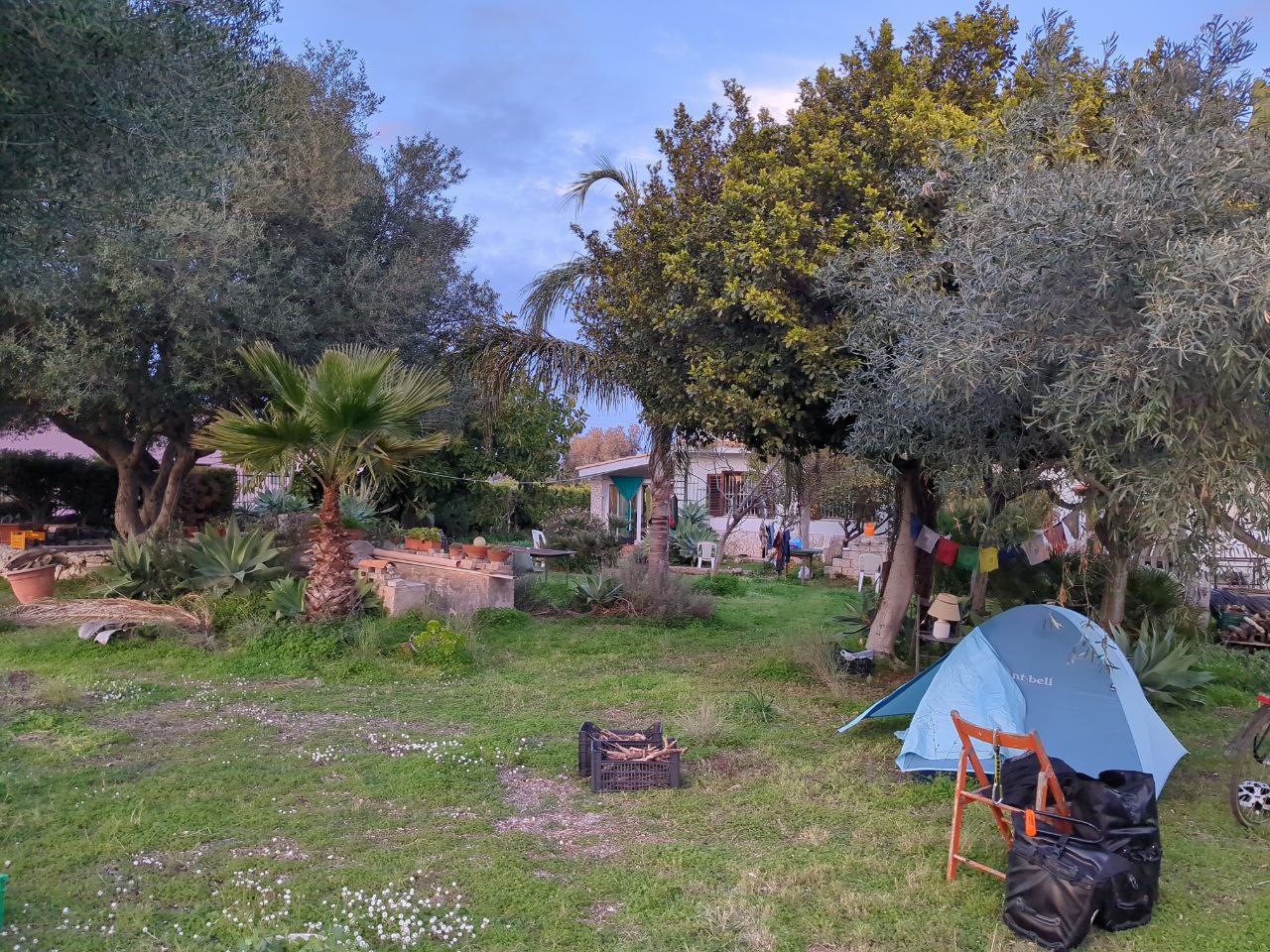
What a beautiful garden to camp in
After delving into these historical cities, I was eager to get the focus back on riding. From a cyclist’s perspective, the following days were the most beautiful: little traffic, curvy mountain roads and beautiful landscapes. And again, I had very nice hosts.

Almond trees blooming in early February
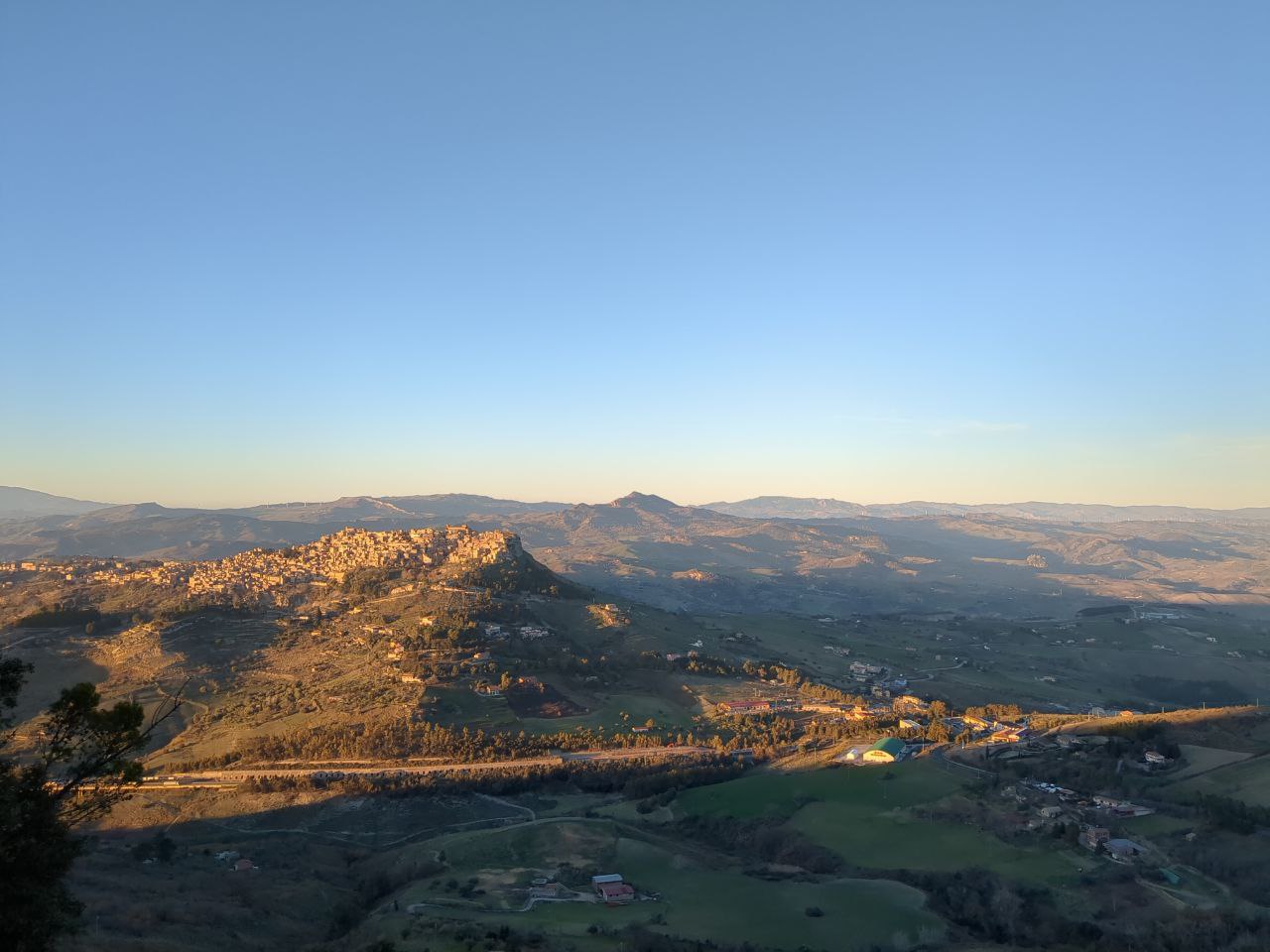
View from Enna towards the north
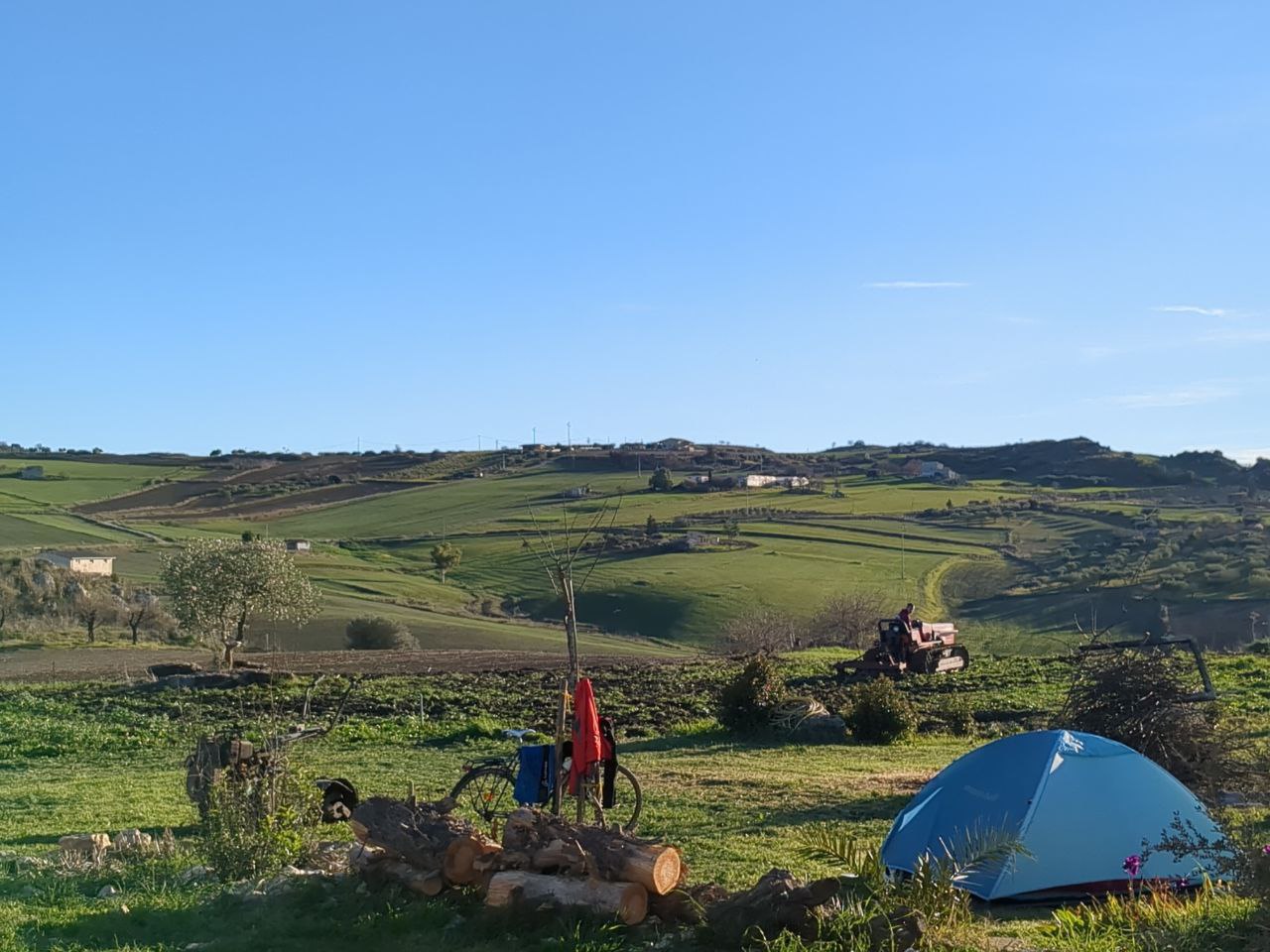
Camping on the grounds of Alessandro who recultivates the land of his grandfather

View from Mussomeli towards the south
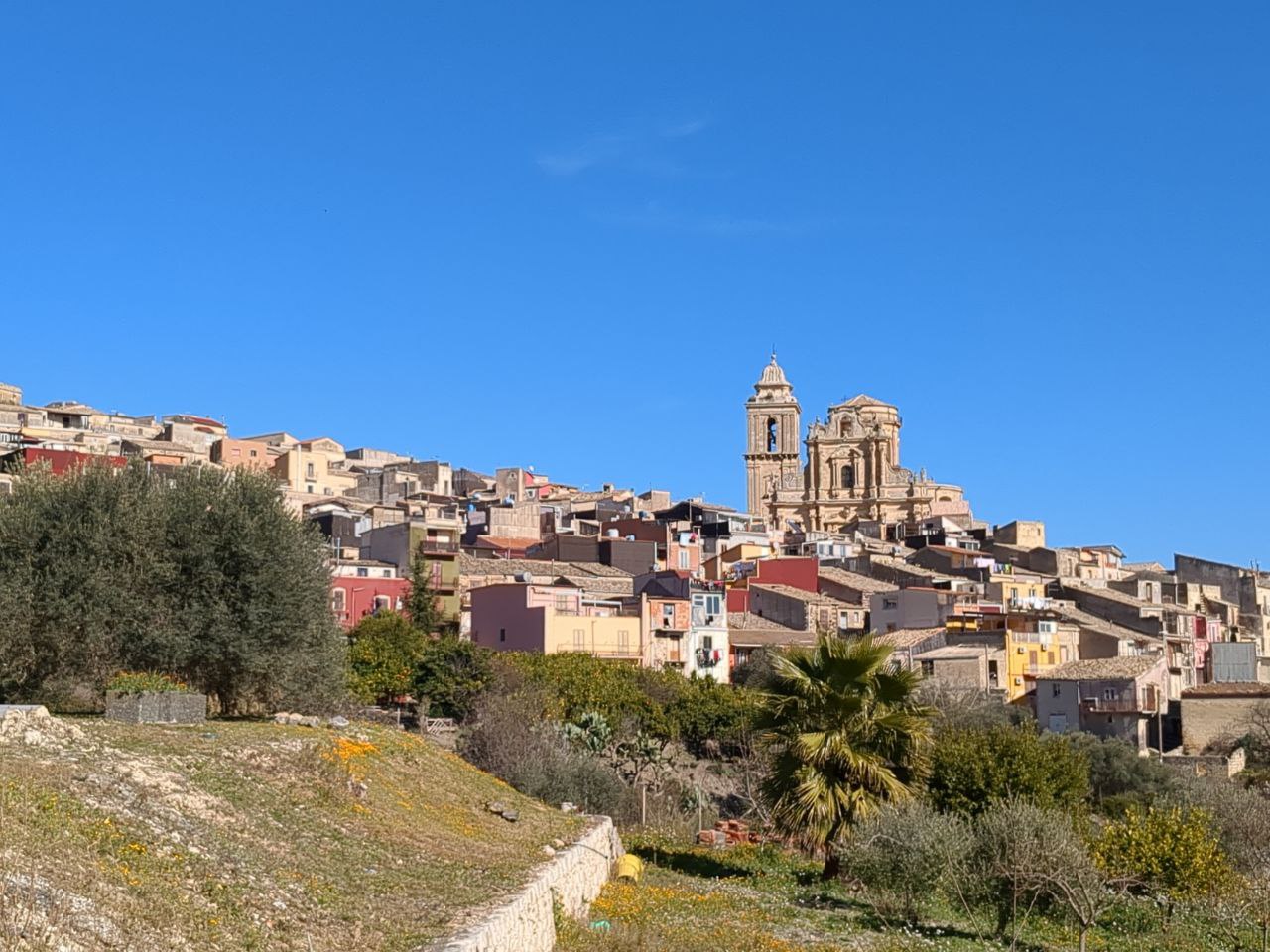
Picturesque old town of Mussomeli
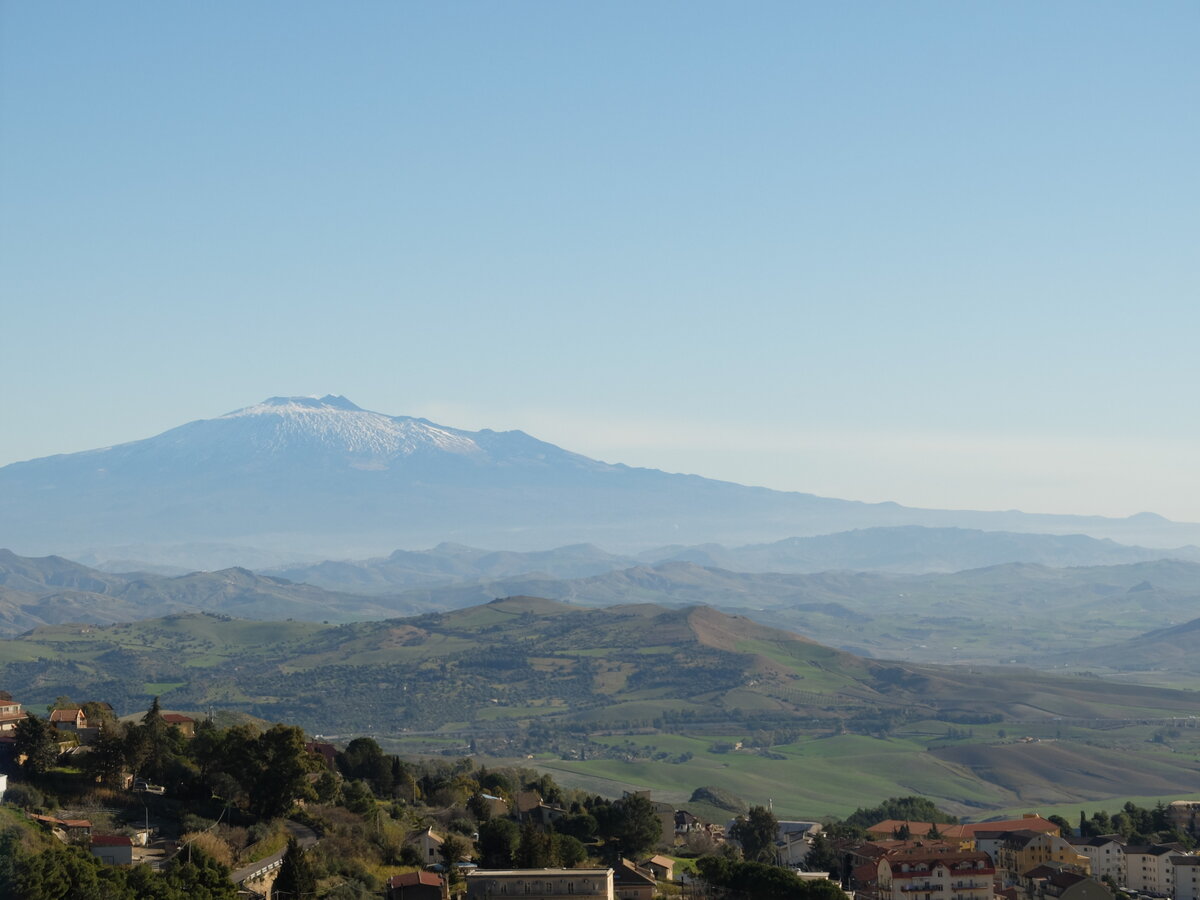
Etna again visible in the background. Almost every square meter of Sicily is cultivated land.
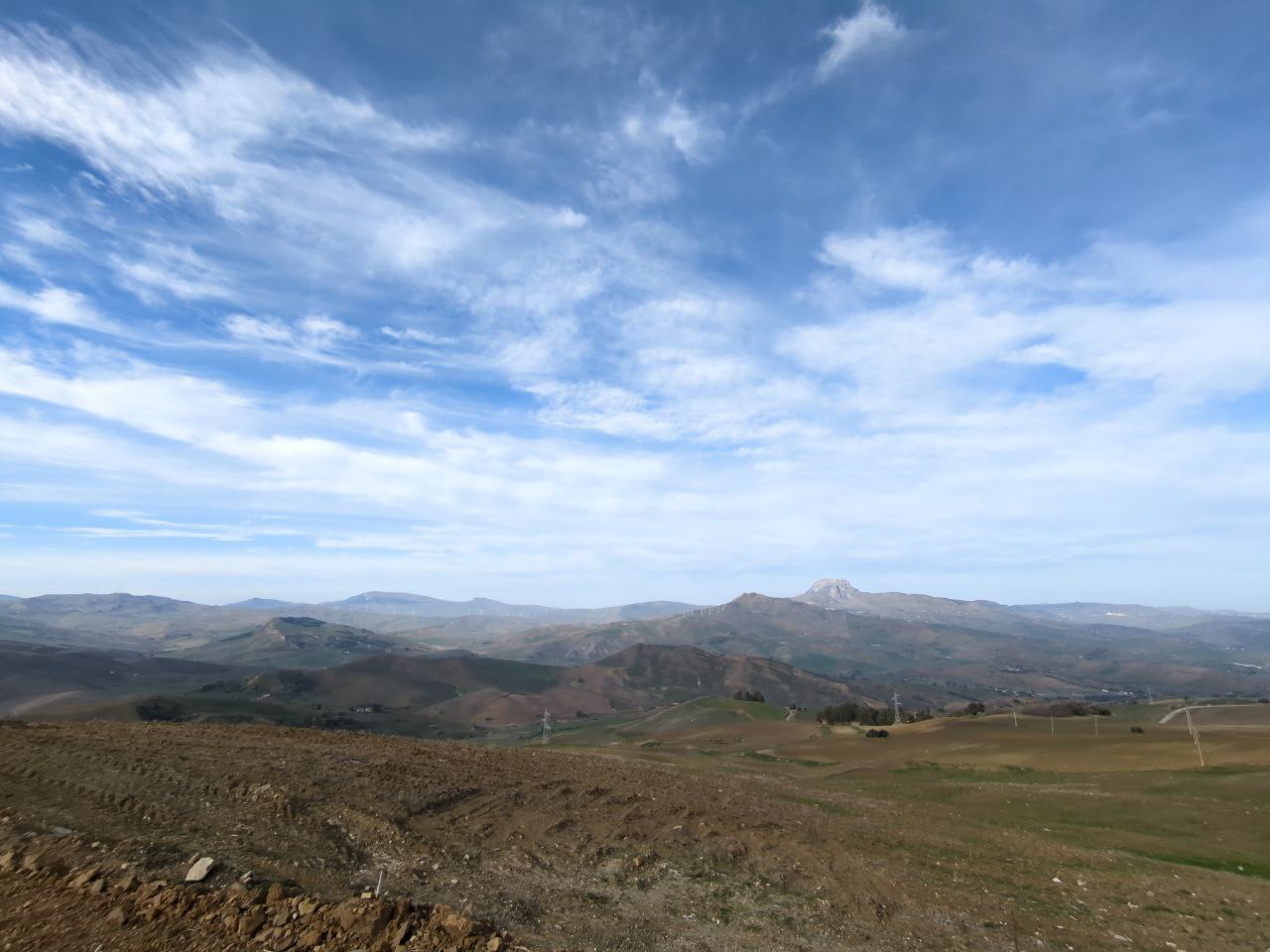
The final mountain range before reaching Palermo
After these days, I was ready to reach my final cycling destination: Palermo. The last day was easy riding as it was mostly downhill. With every meter the urban density increased until I finally reached Palermo’s limits.

Finally there!
Part 3: Getting Back
After finishing my cycling trip and staying some nights in Palermo in a backpacker’s hostel, I took the ferry to Napoli (GNV overnight ferry, bicycles are free). Then, my final journey was visiting a friend in Torino (took a Frecciarossa high-speed train, bike had to be disassembled and put in a „bag“ as no bike transport option) before taking an overnight bus with a bike rack back to Germany via Milano and Zurich. Traveling with the bike can sometimes be exhausting, as you need to research a lot of options. But all in all it worked out fine.

Disassembling the bike for the train. I found an old blanket in a trash in Napoli which served as a bag.

Back in Germany enjoying my first Bretzel
Trip Review
I had a great experience for this trip. Going alone can be hard but it was also rewarding and empowering. Also, it is much easier to meet people if you are on your own. In terms of timing, I think it is better to go a little bit later in the year or in fall. Then the days are longer and the nights not so cold.
Gear and Bike
All in all, in terms of durability I am happy. Nothing major happened, although I did some last minute changes to the setup. I was also afraid that the rear rack with the direct attachment to the quick release would have issues but luckily no. Only some minor things came up like:
- irritation in the bottom bracket
- threaded headset became sightly loose
- loose spokes on the rear wheel
The big question is: How did I like having only single gear keeping in mind that I did around 1000 meters of elevation gain each day? I have mixed feelings about this. On the one hand, the simplicity is alluring. On the other hand, going uphill above a certain steepness (for me with this gear ratio, anything bigger then 8%) is a pain. You have to be alright with getting off of your bike and pushing it from time to time.
One thing I would definitely change is to install a proper light system instead of relying on battery powered removable lamps. More then expected I was riding around in the dark e.g. after setting camp. To search for the lamps was annoying. Also, the weight distribution was not ideal with too much weight in the back. It made the bike to a certain degree unstable. What I liked was having the backpack with me which I could also put on when being forced to push the bike.
Some more notes for my future self:
- get the right lock and find a good attachment on the bike, mine was probably too heavy
- unused or barely used items: extra cup, carabiner
- tent without the inner structure worked out well
- Italy does not have screw gas canister, check before
- take a sun cap
- USB dynamo charger was a waste, rather rely on power bank